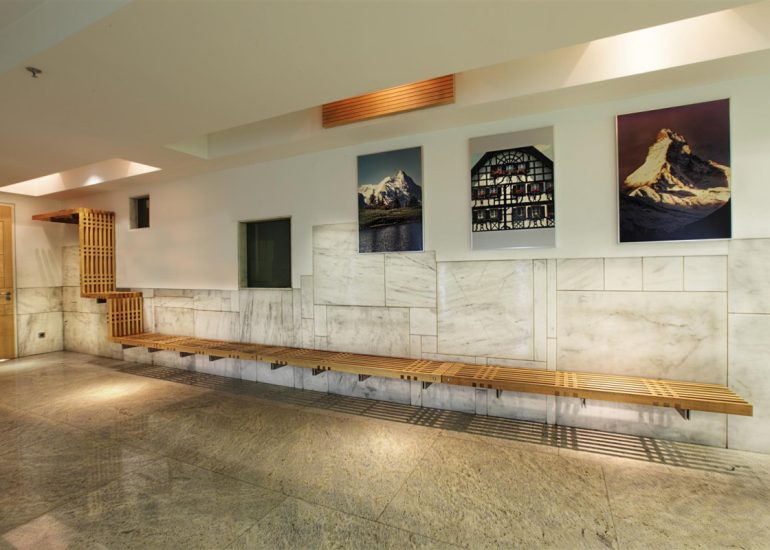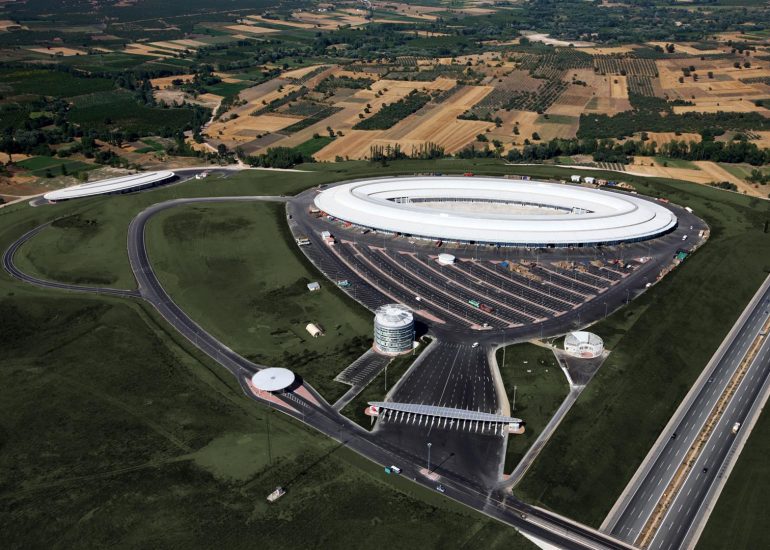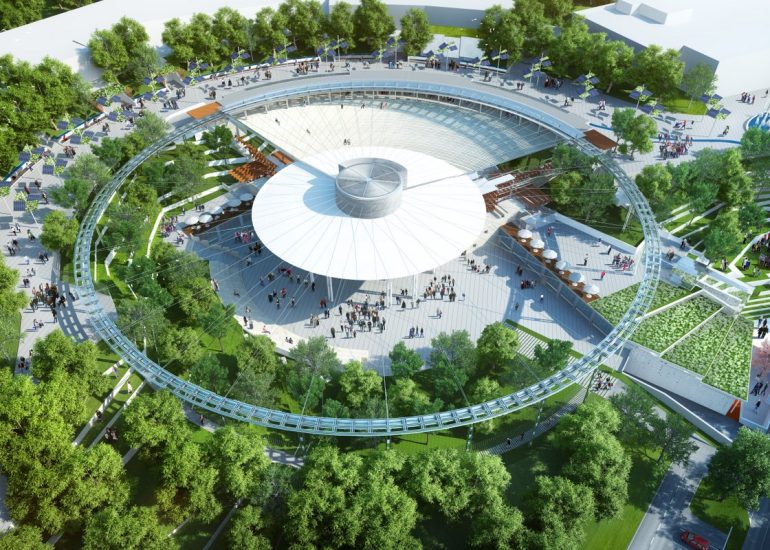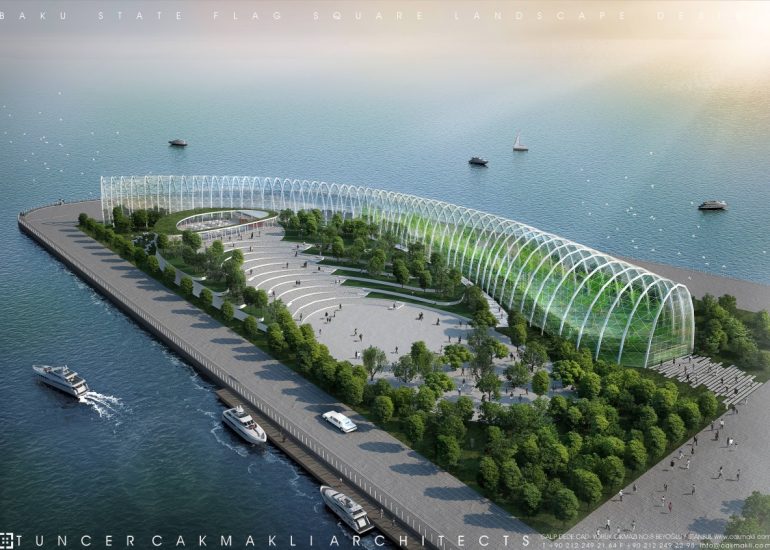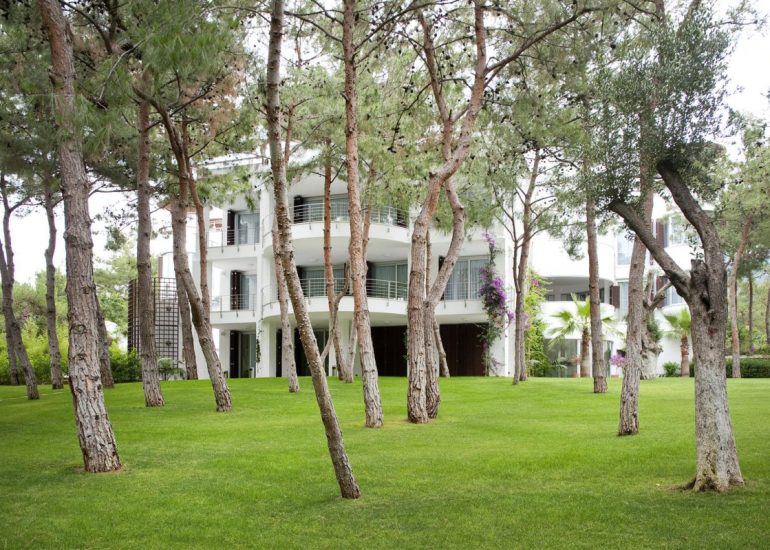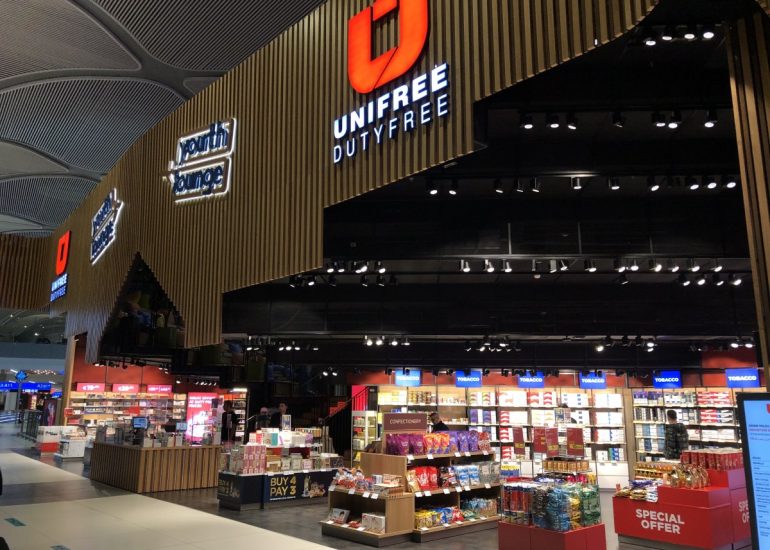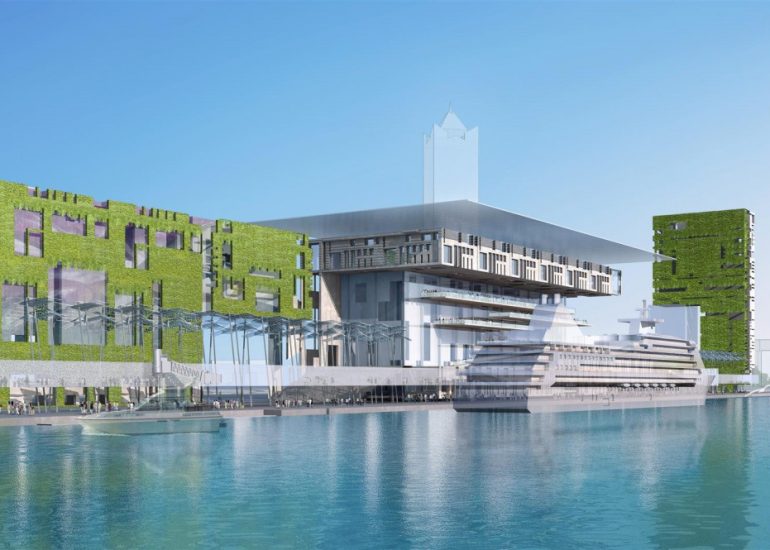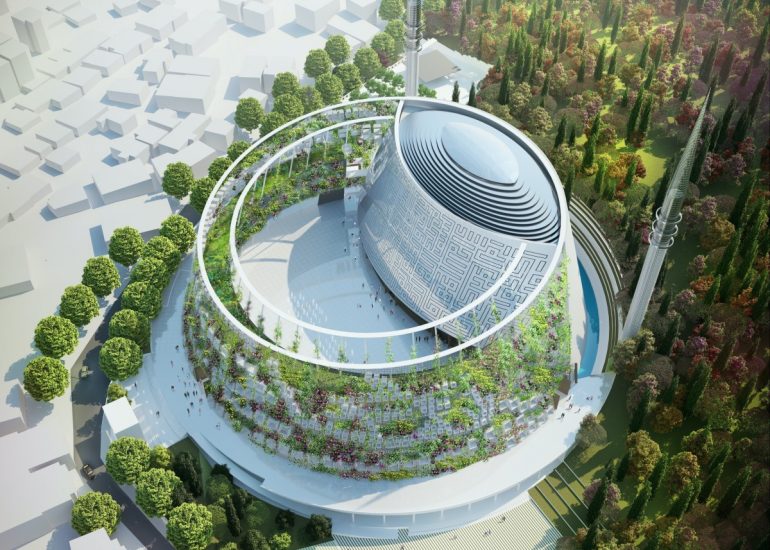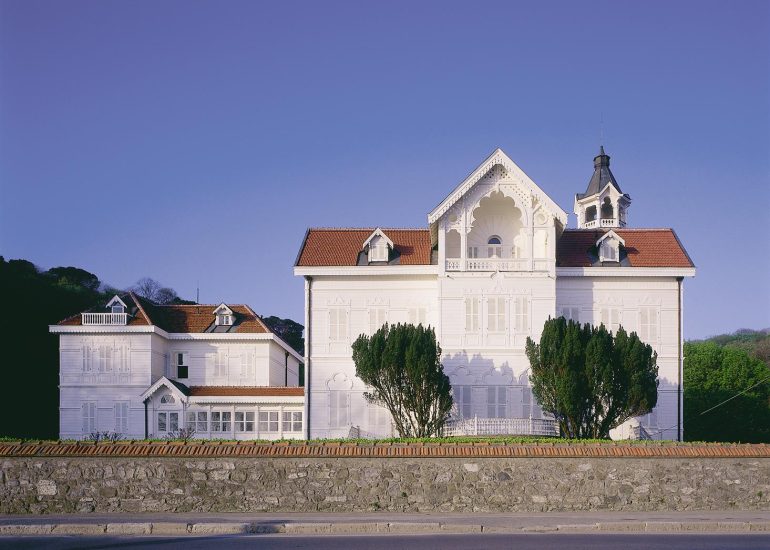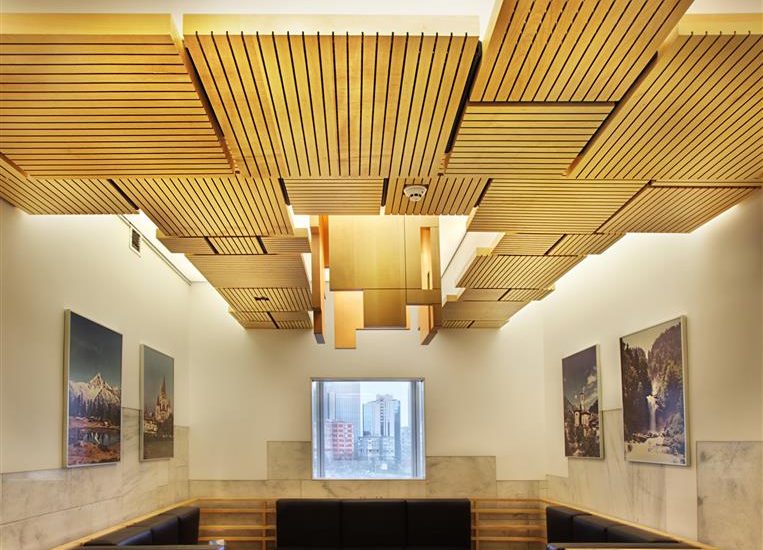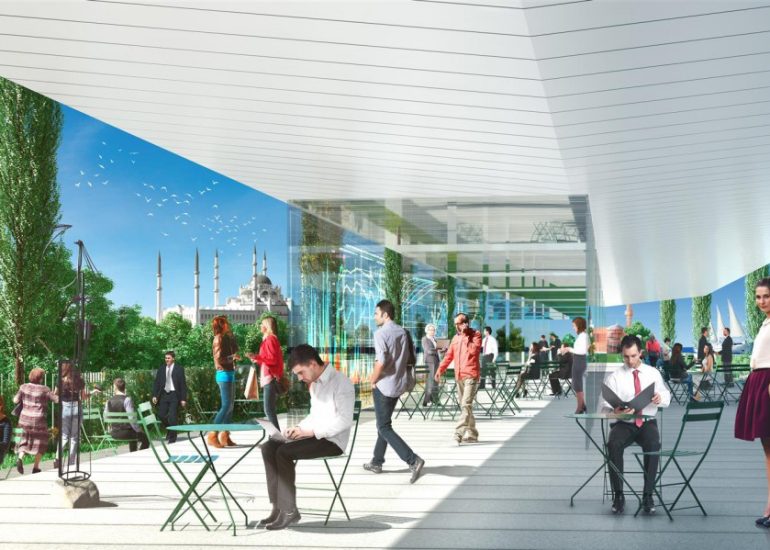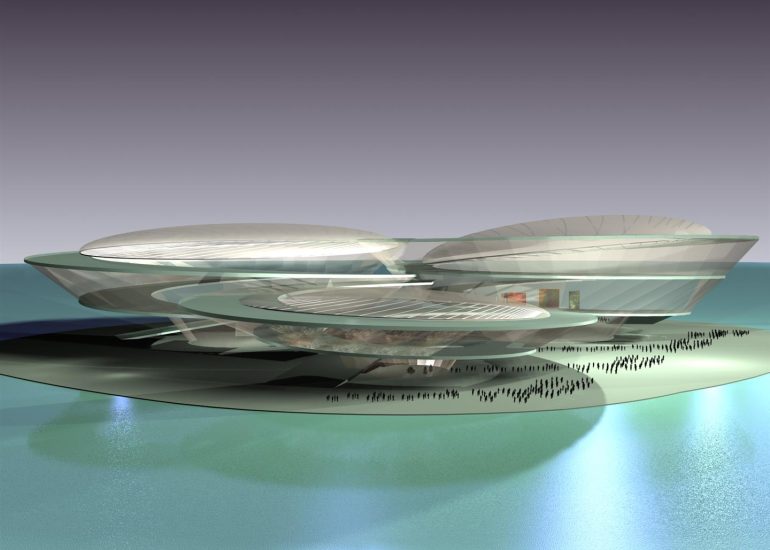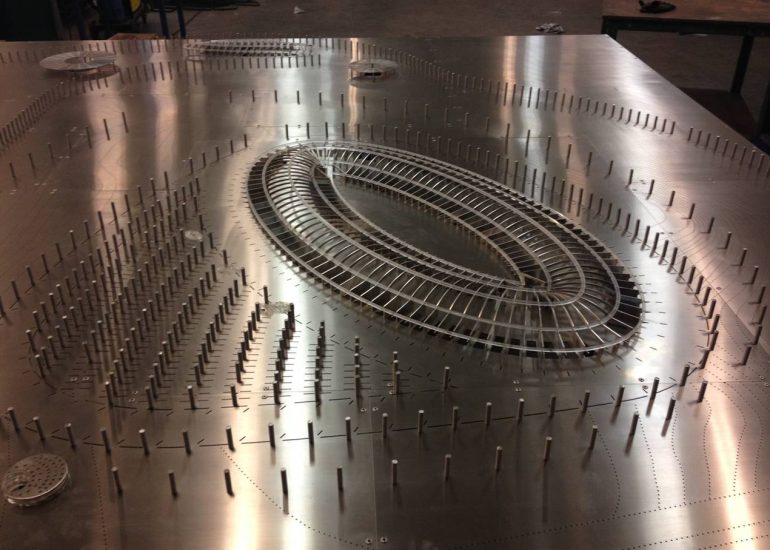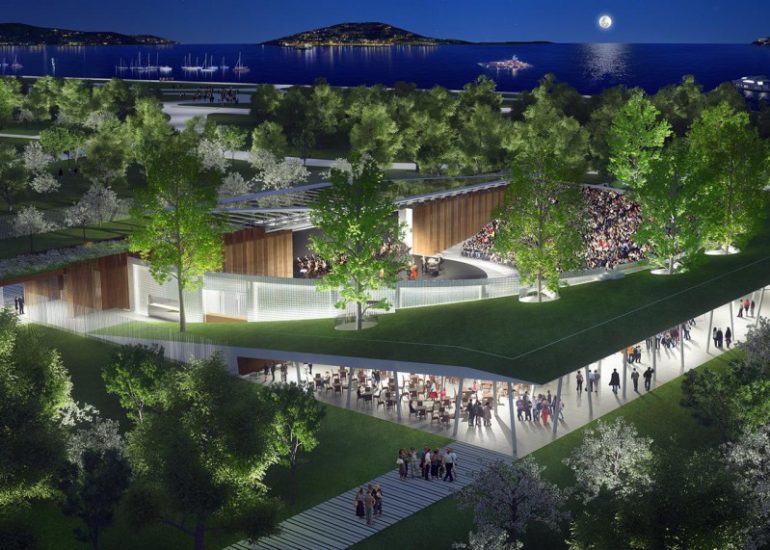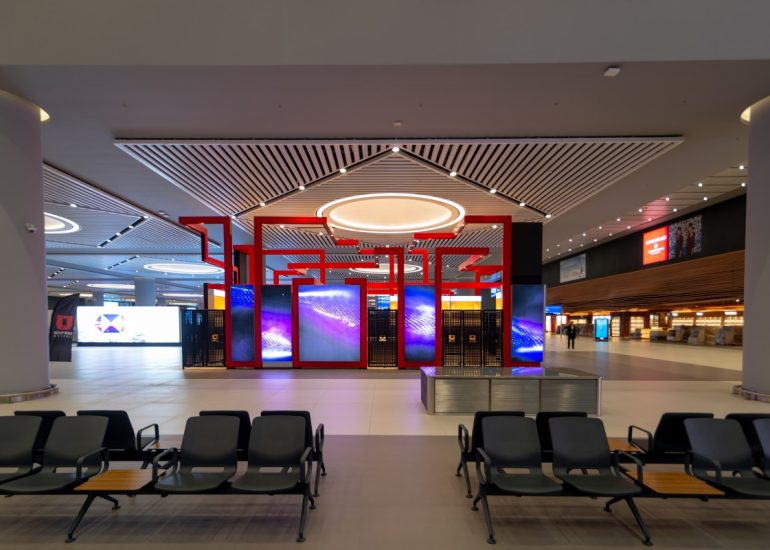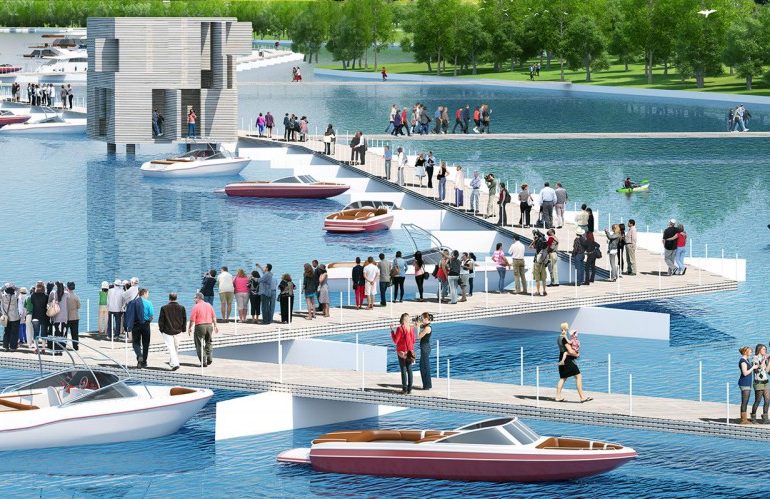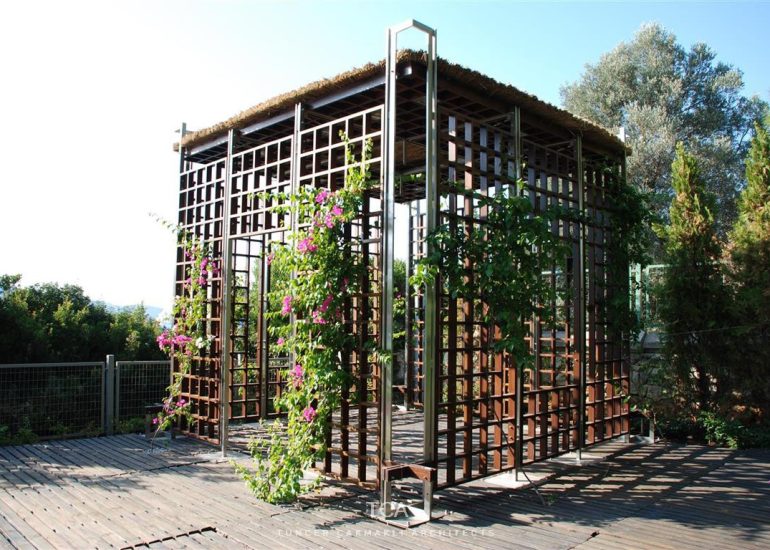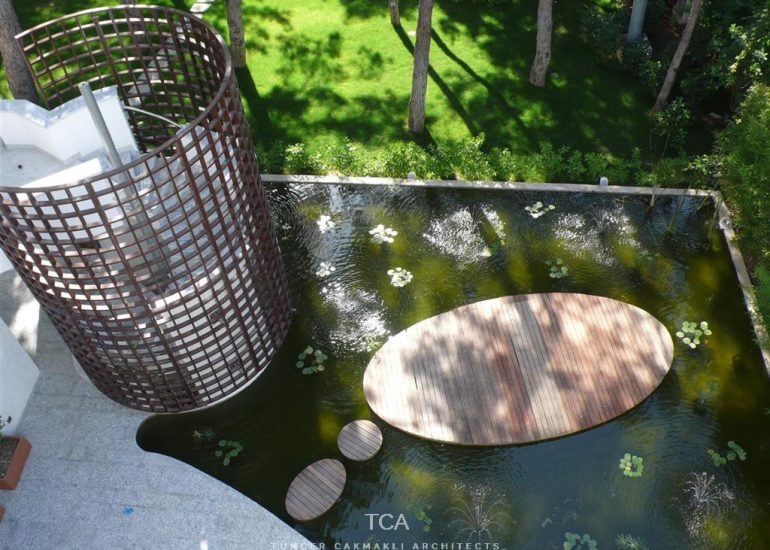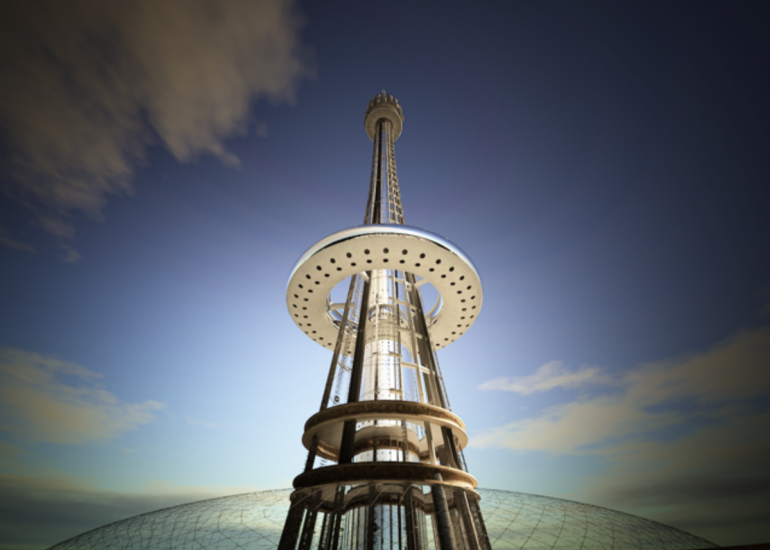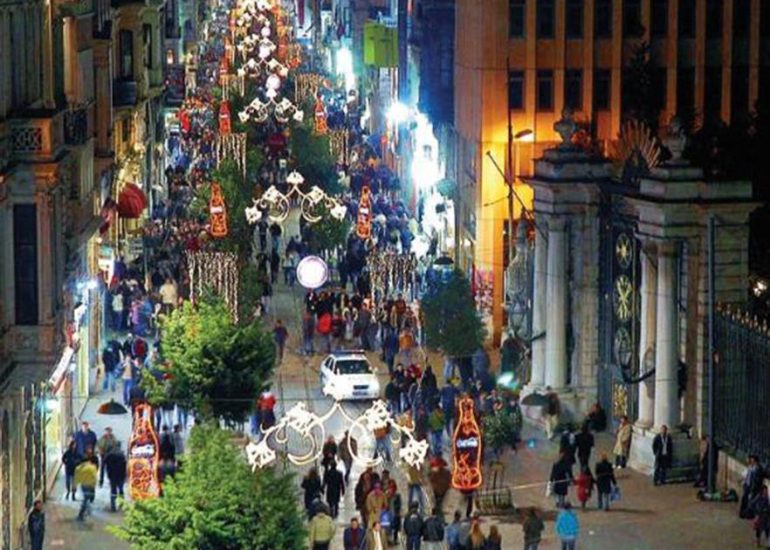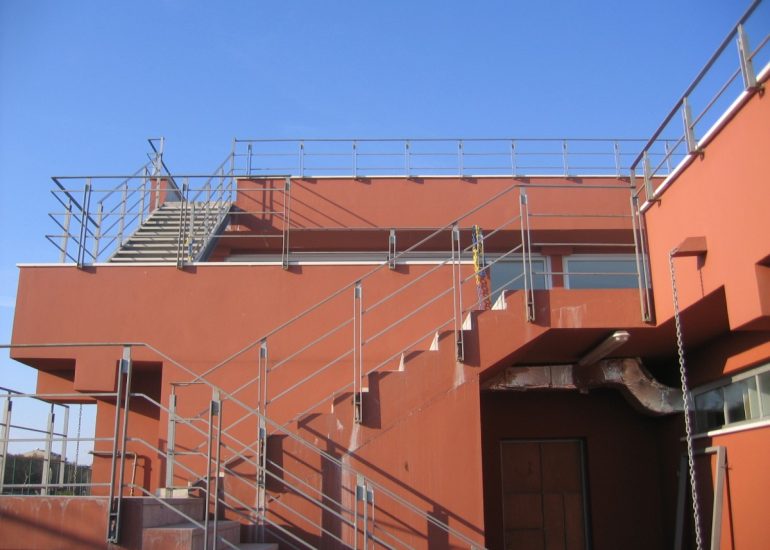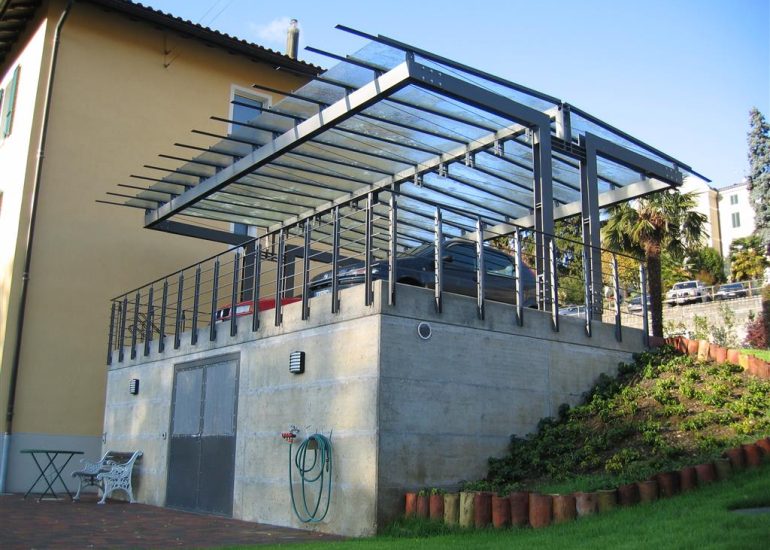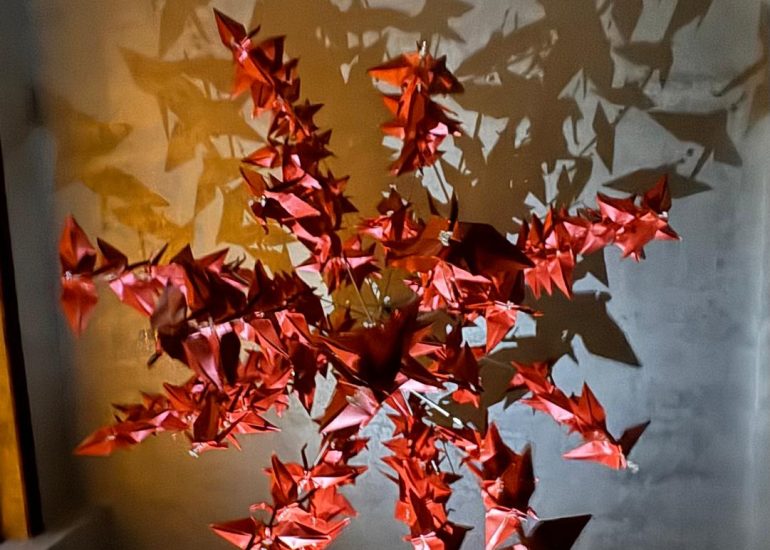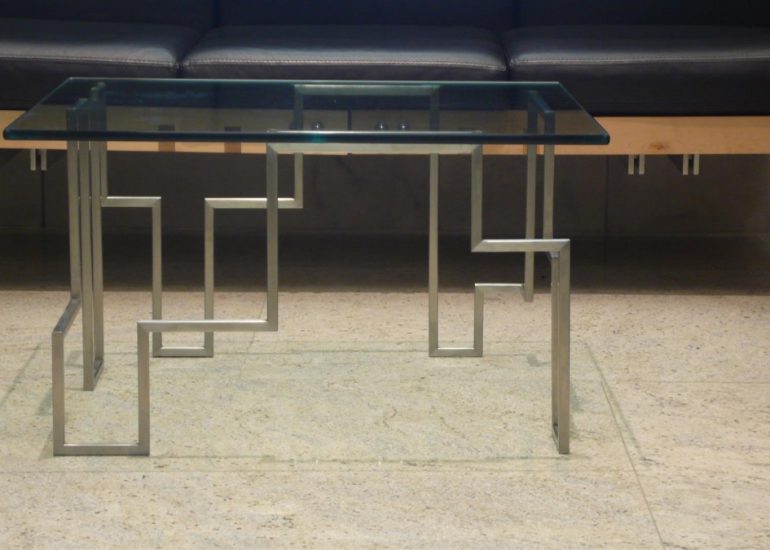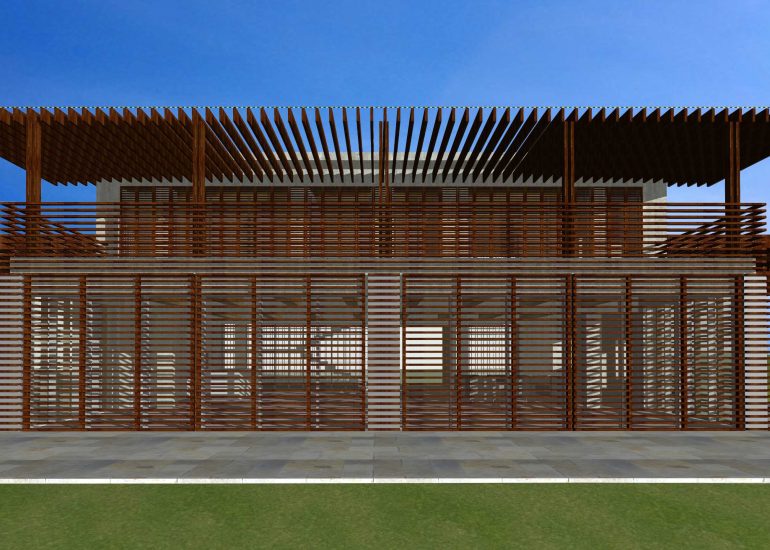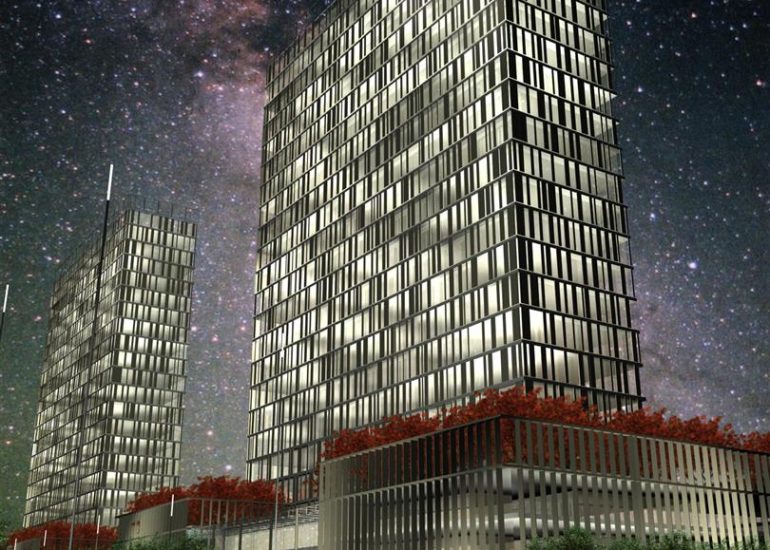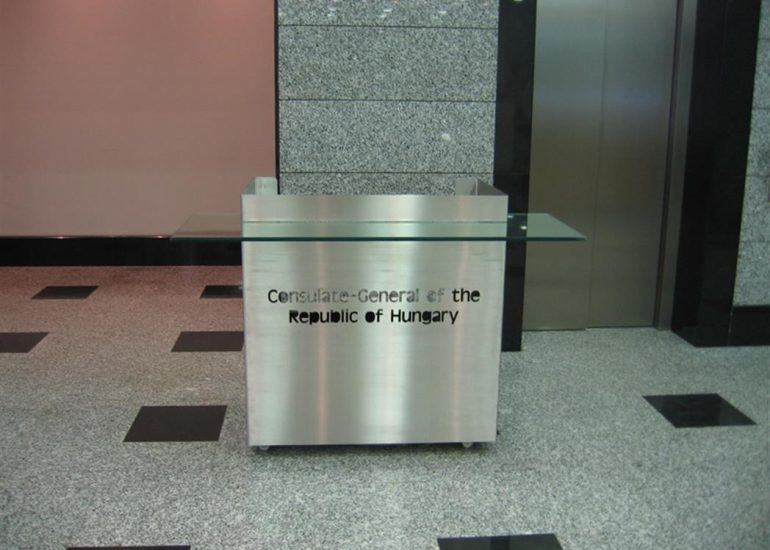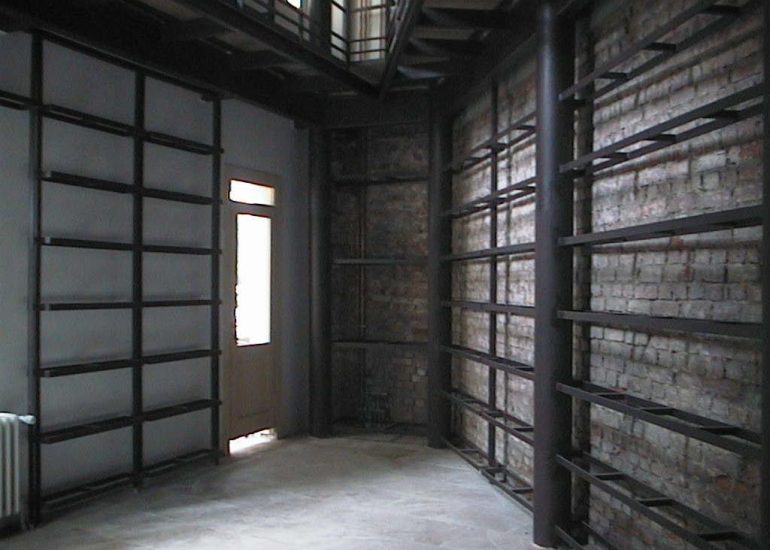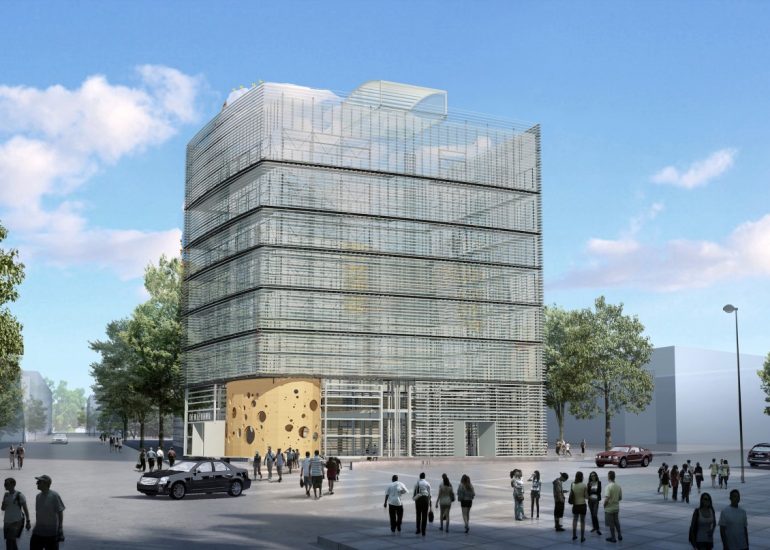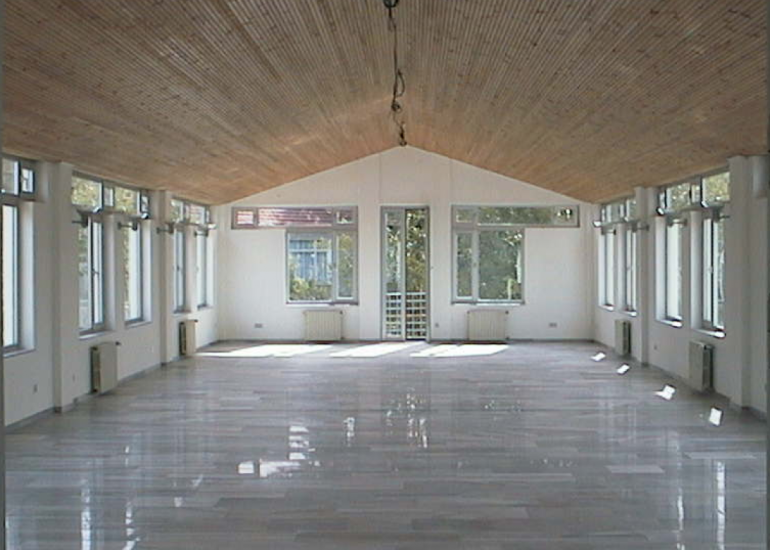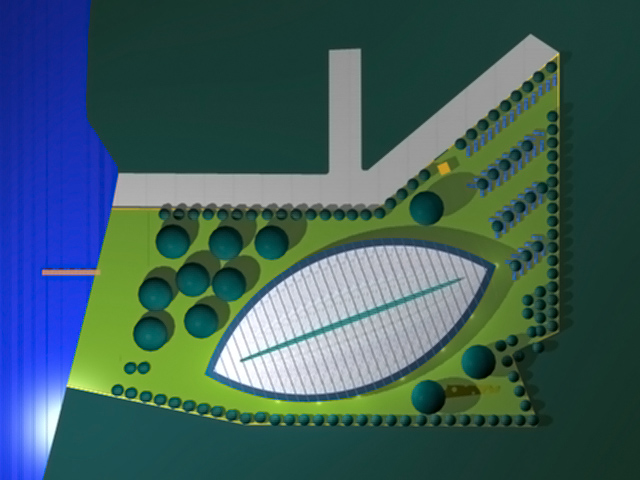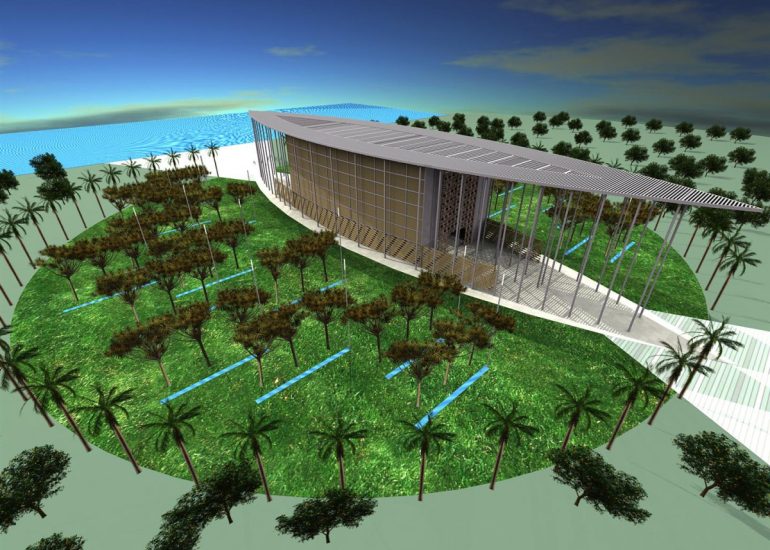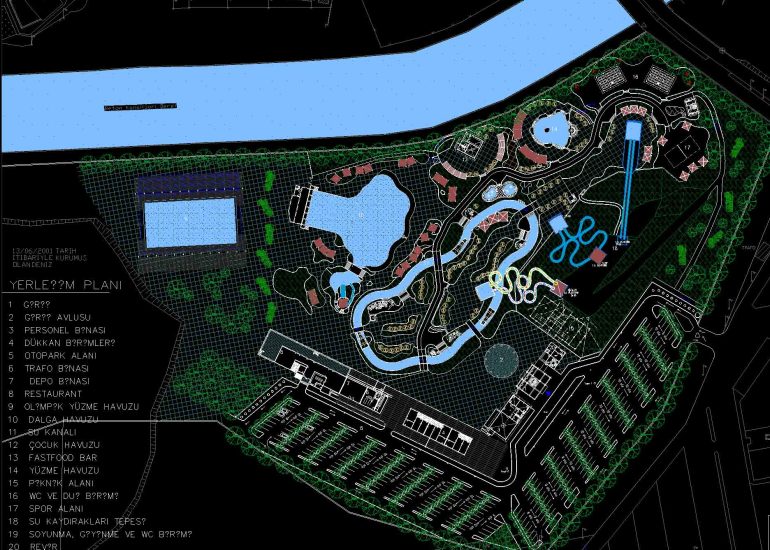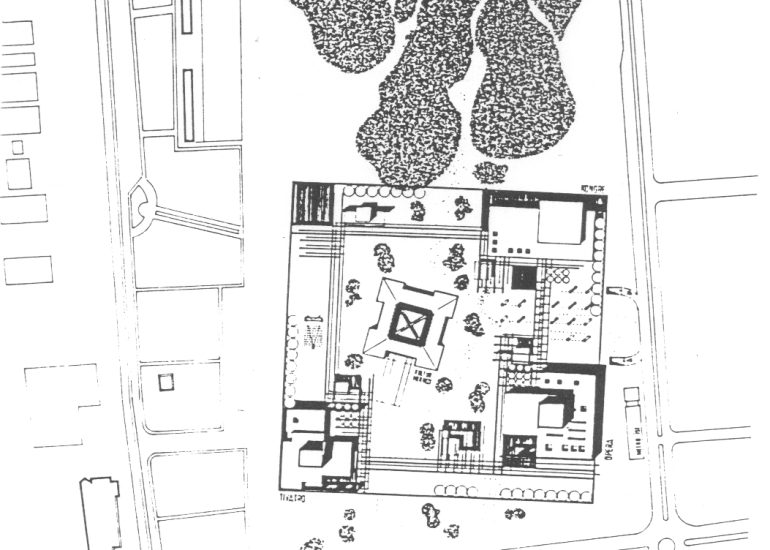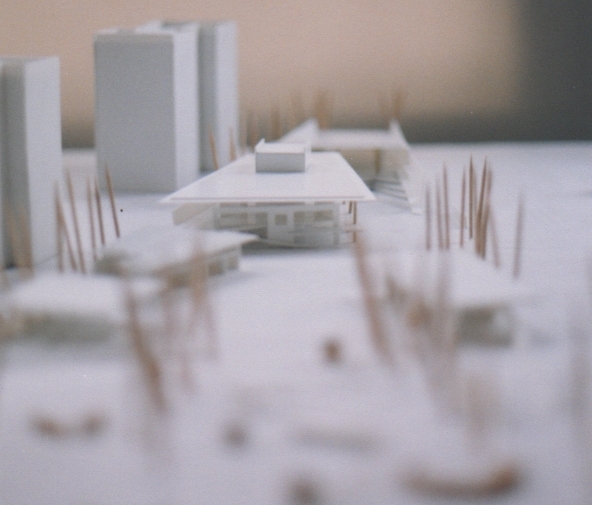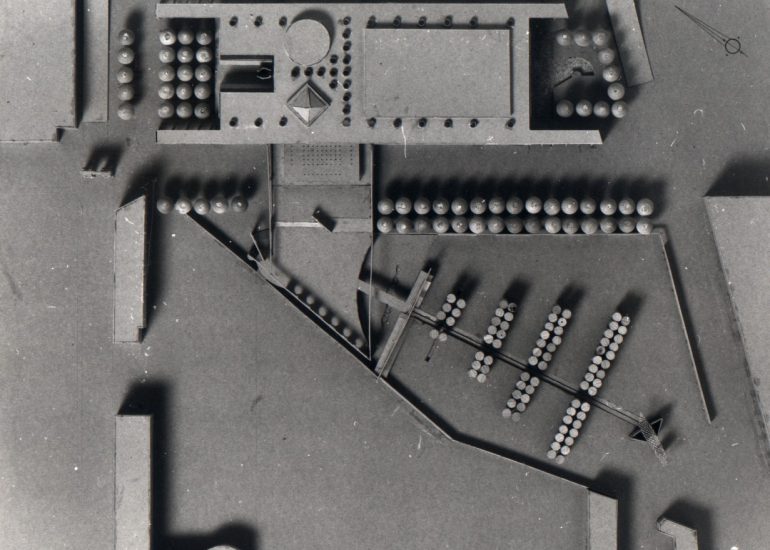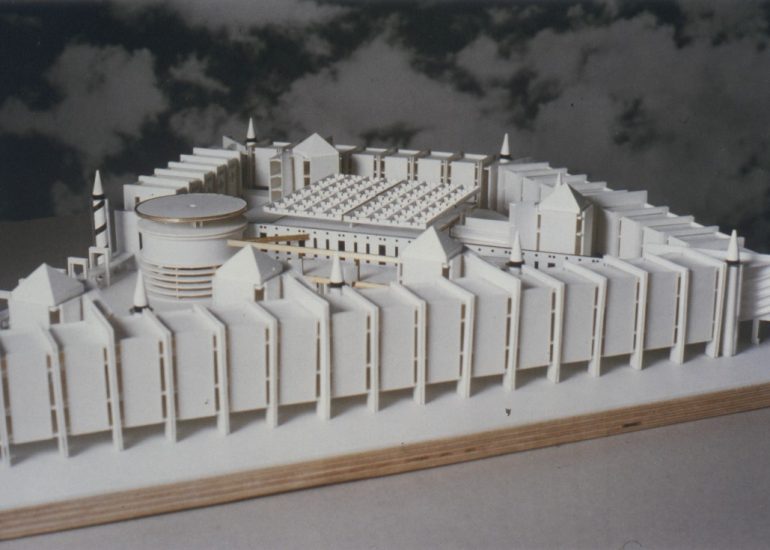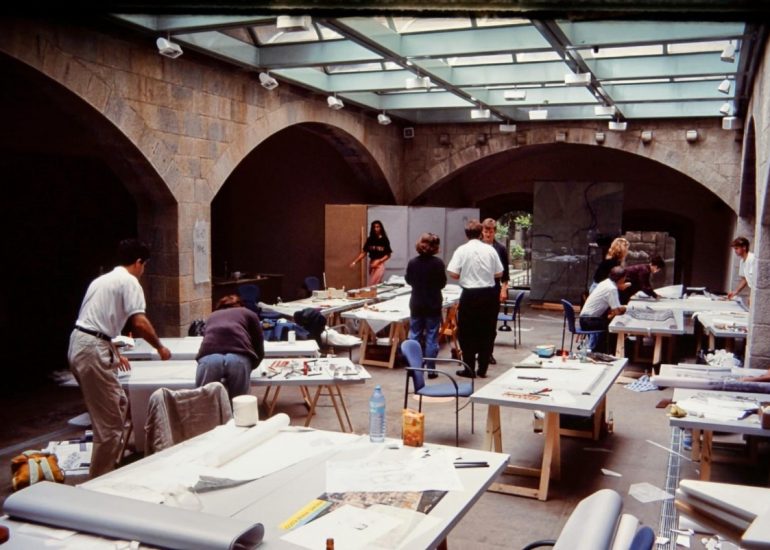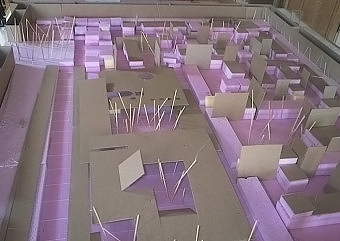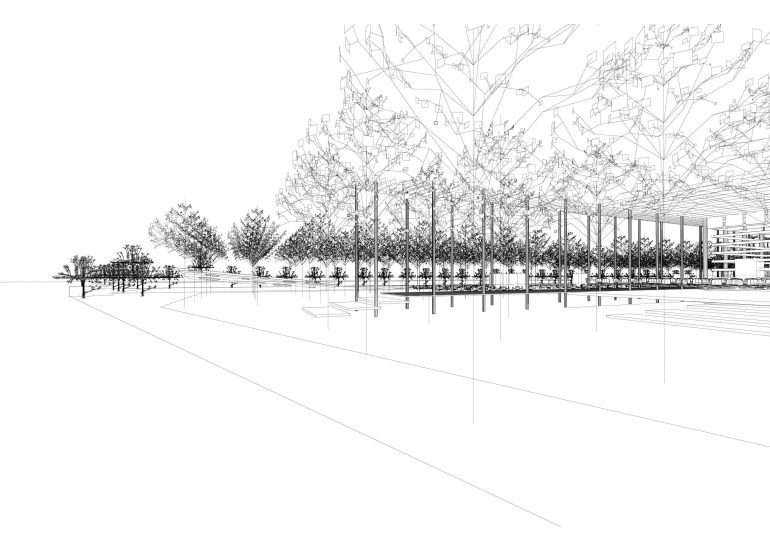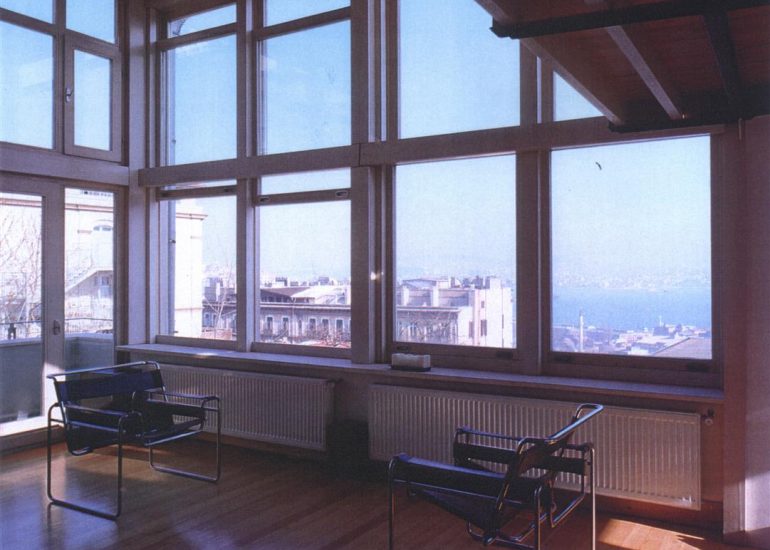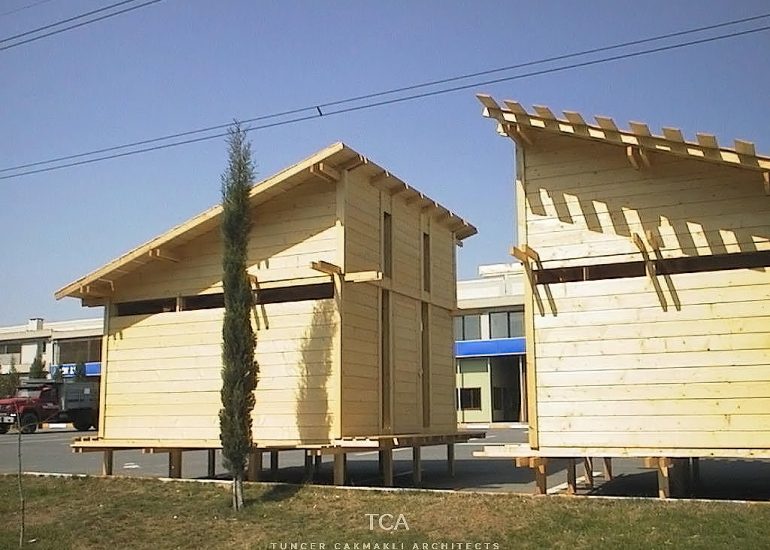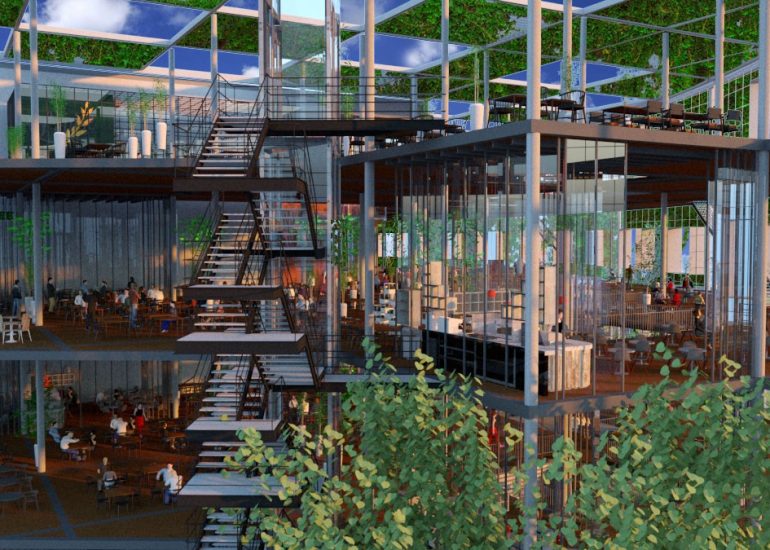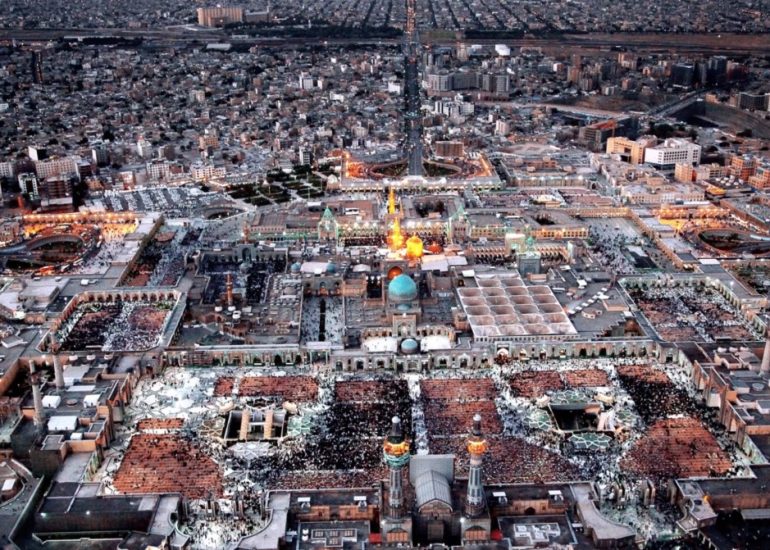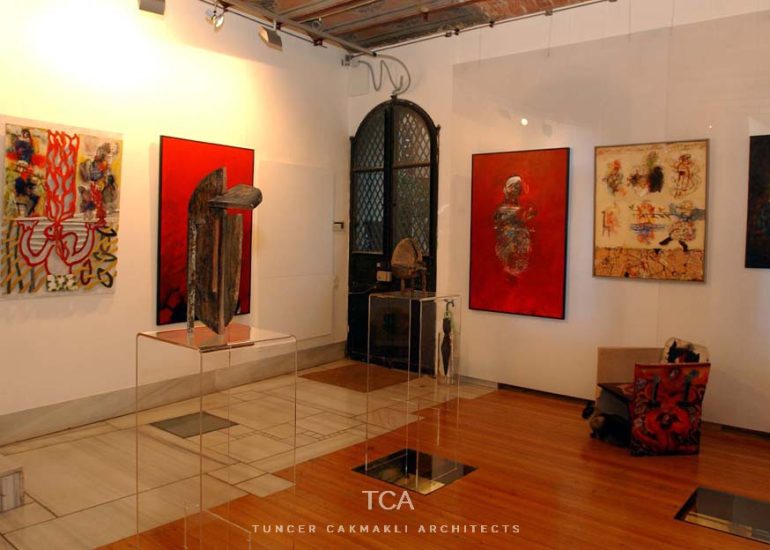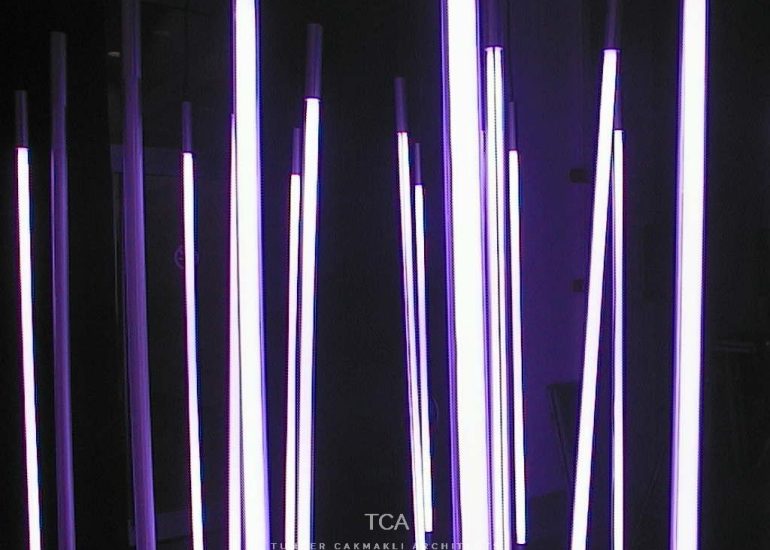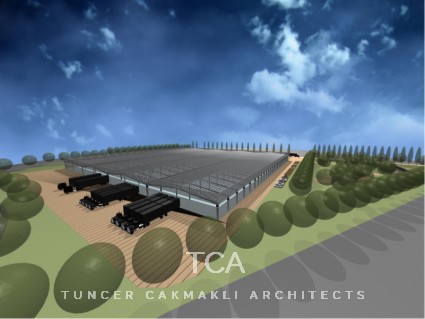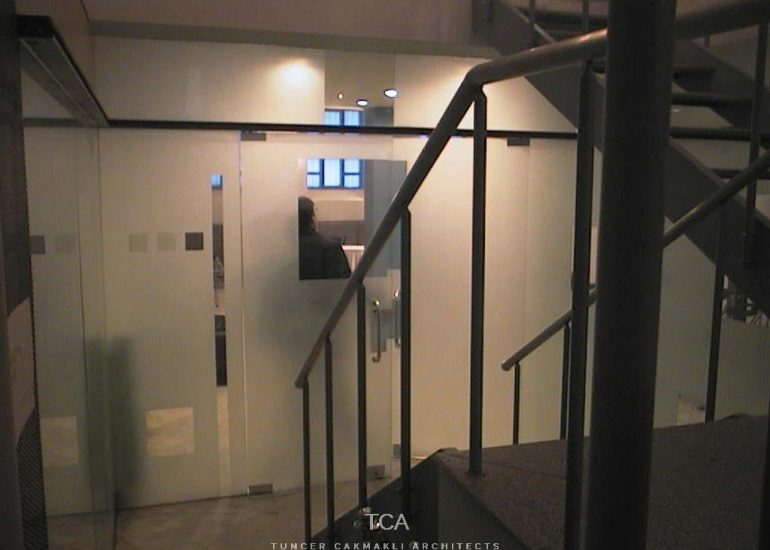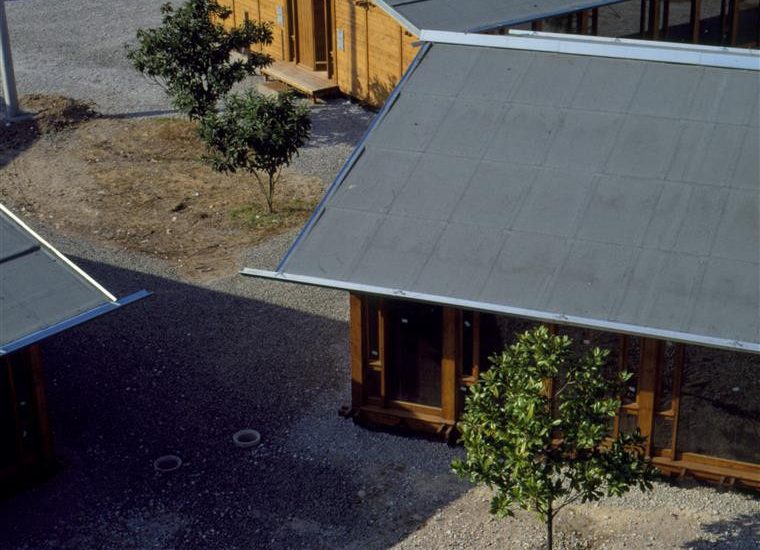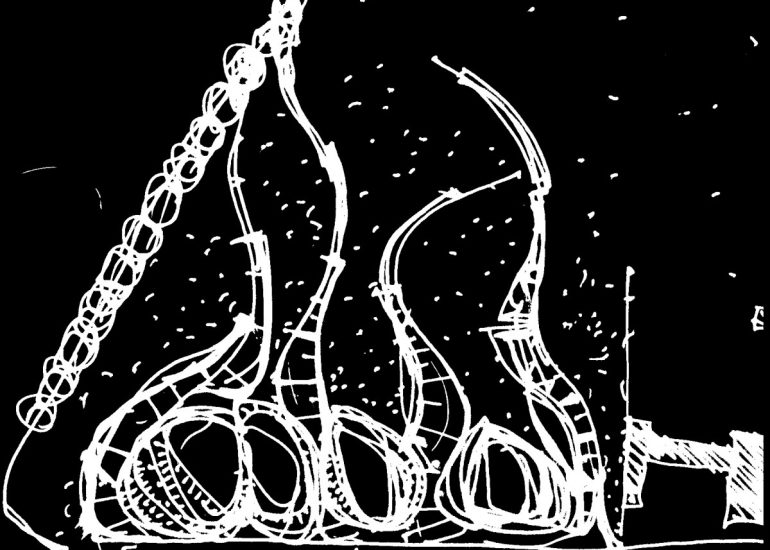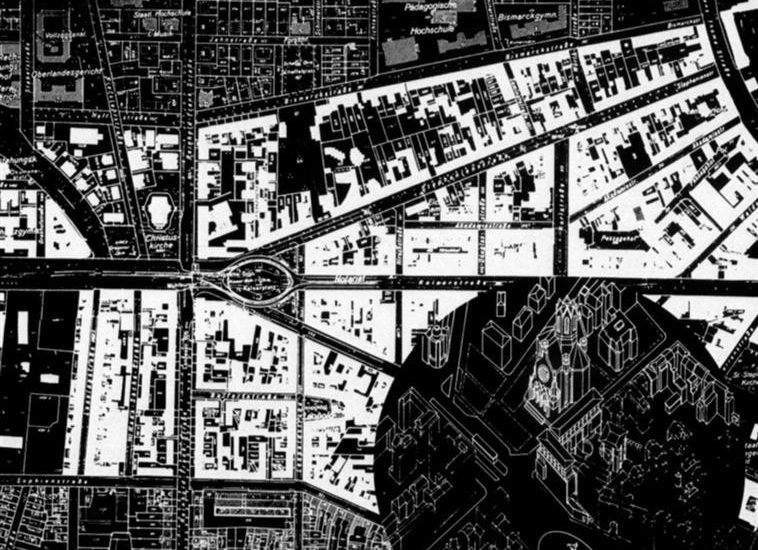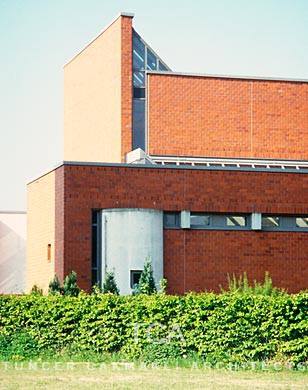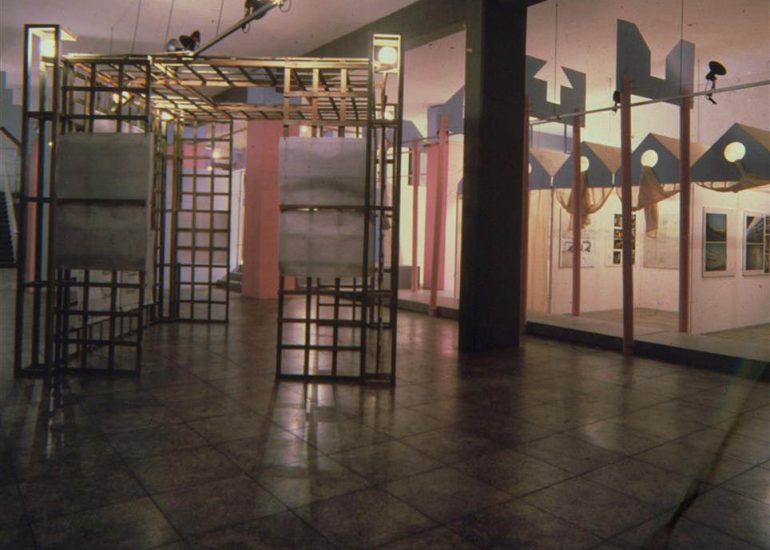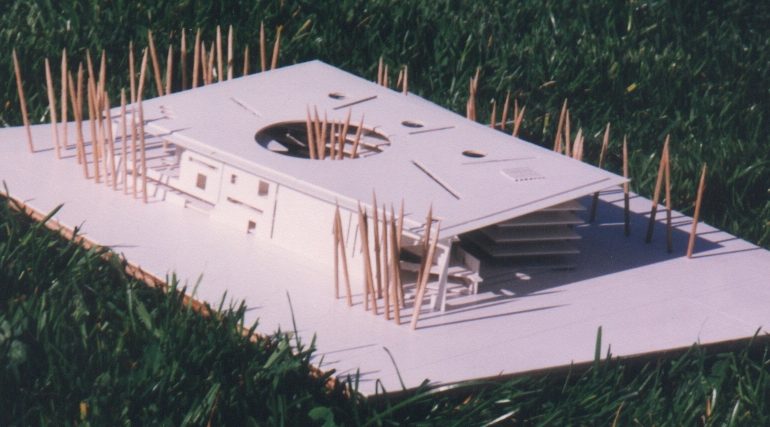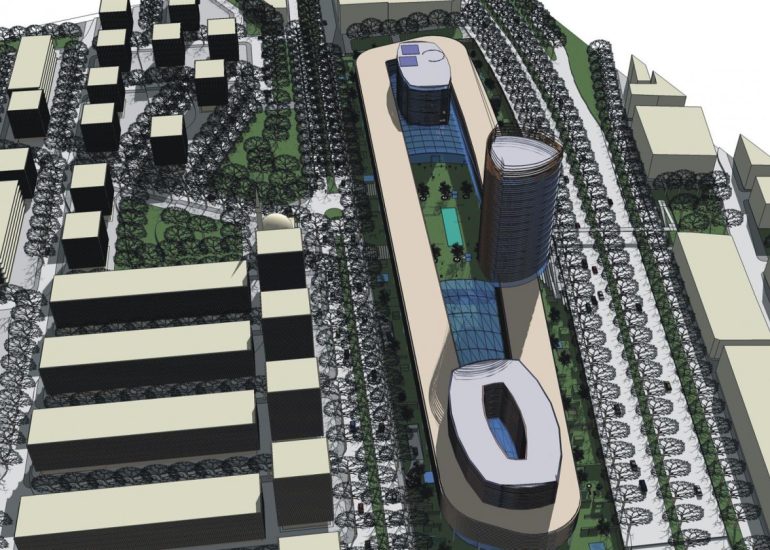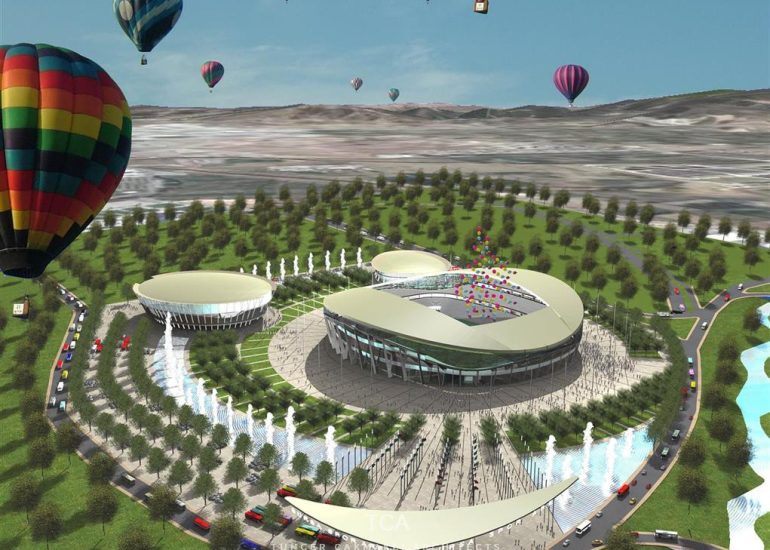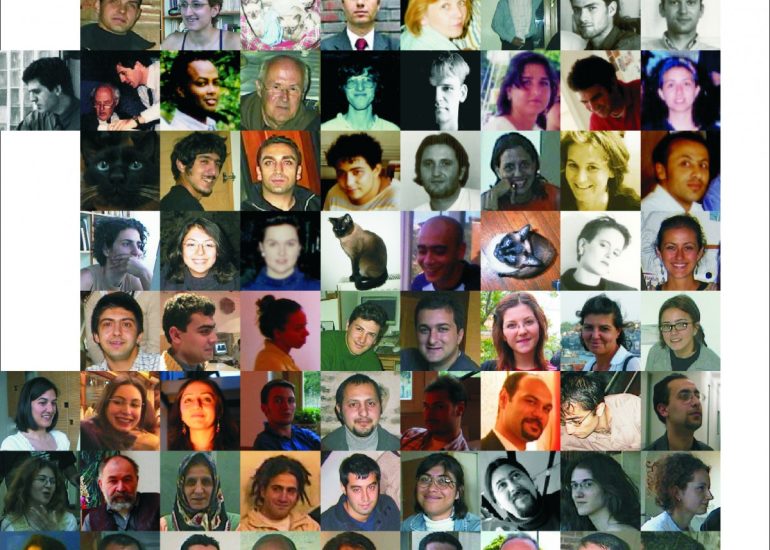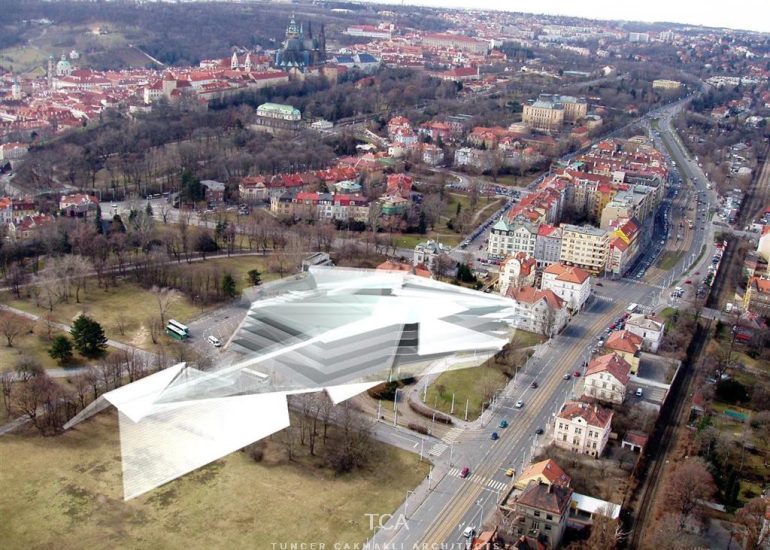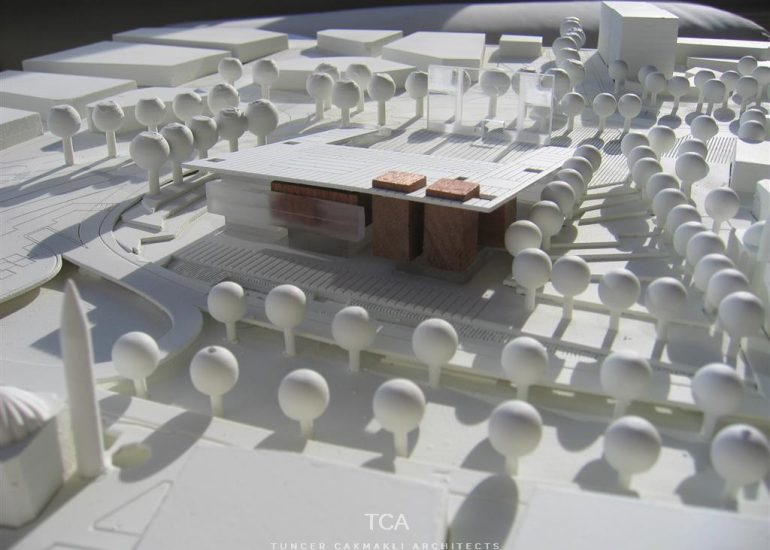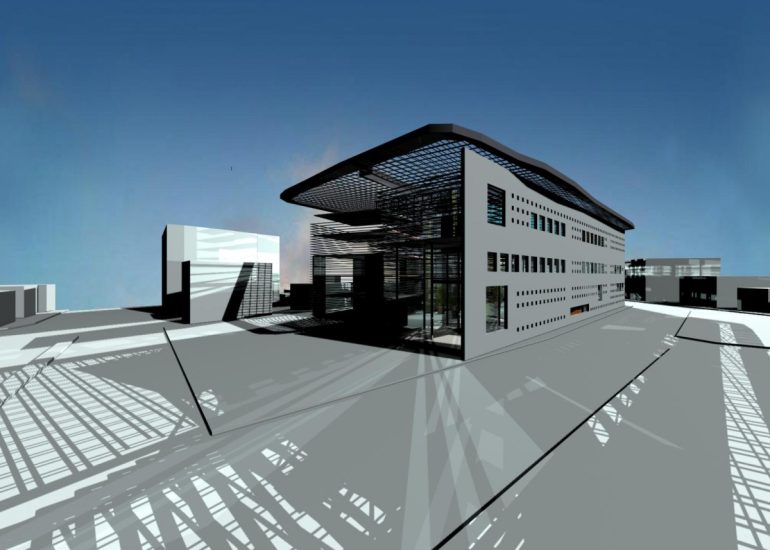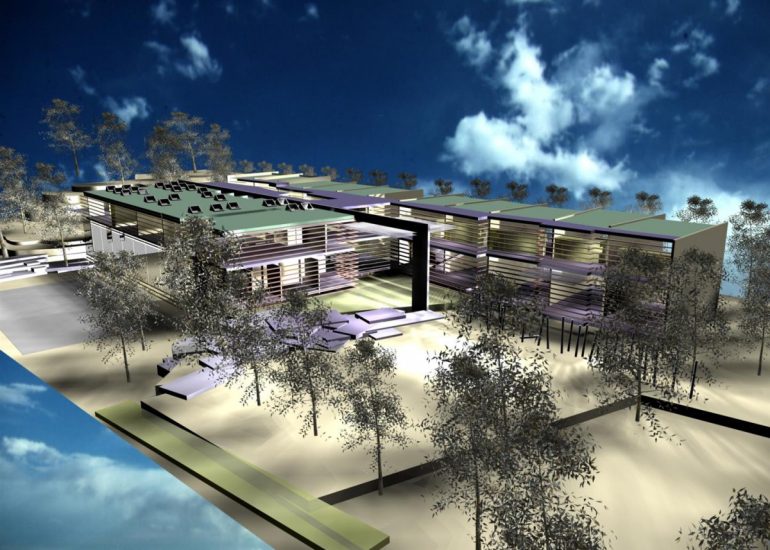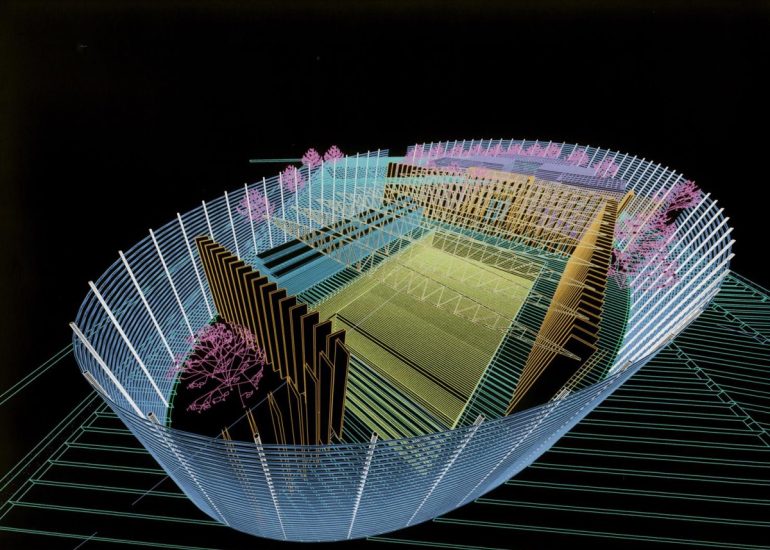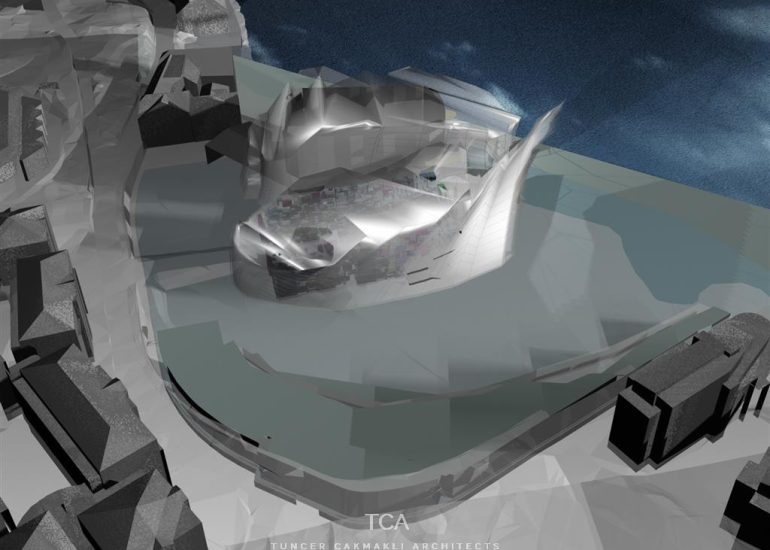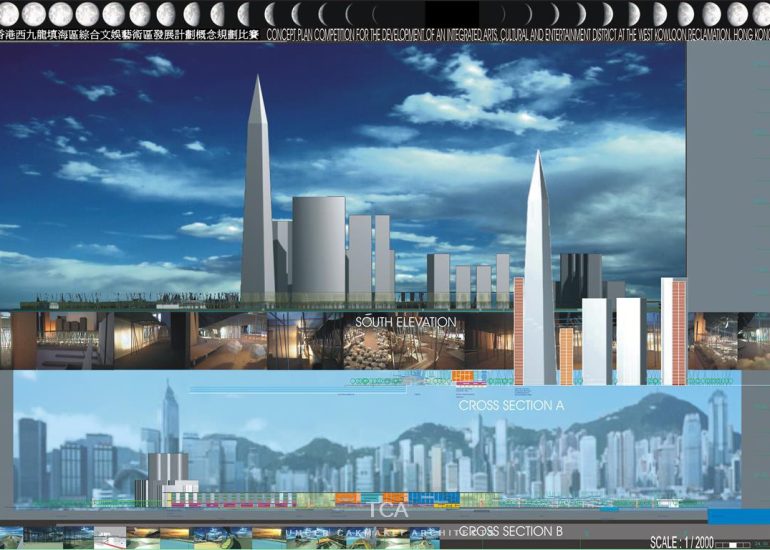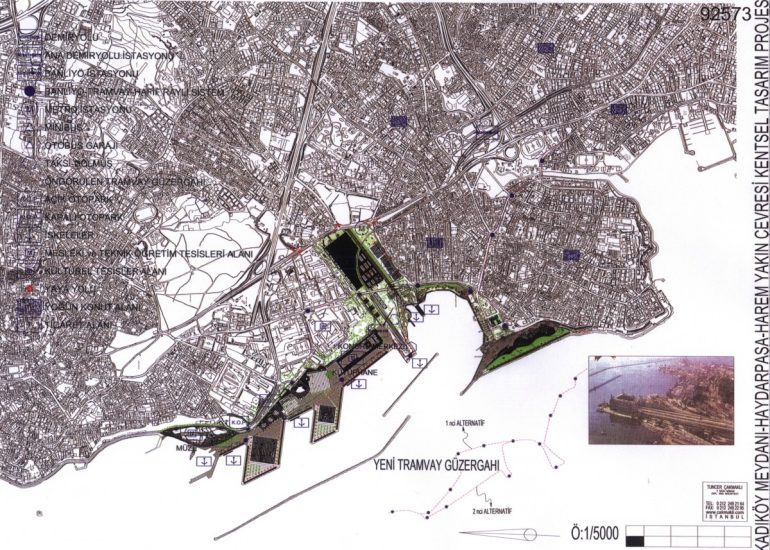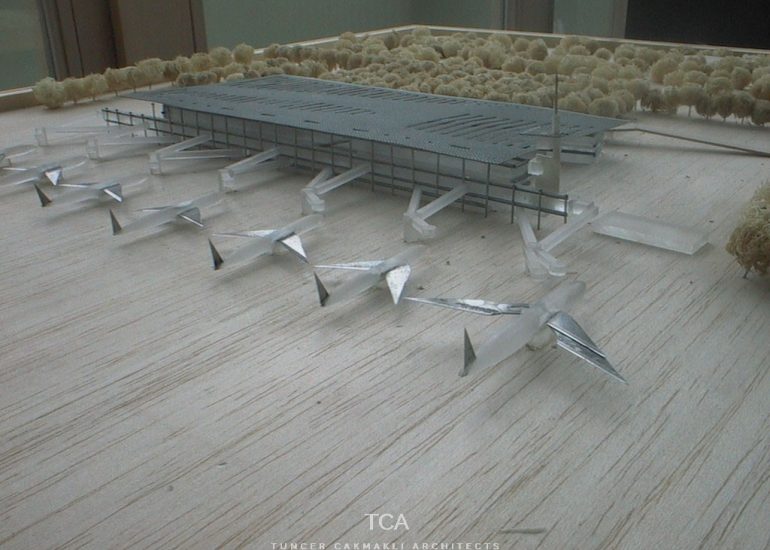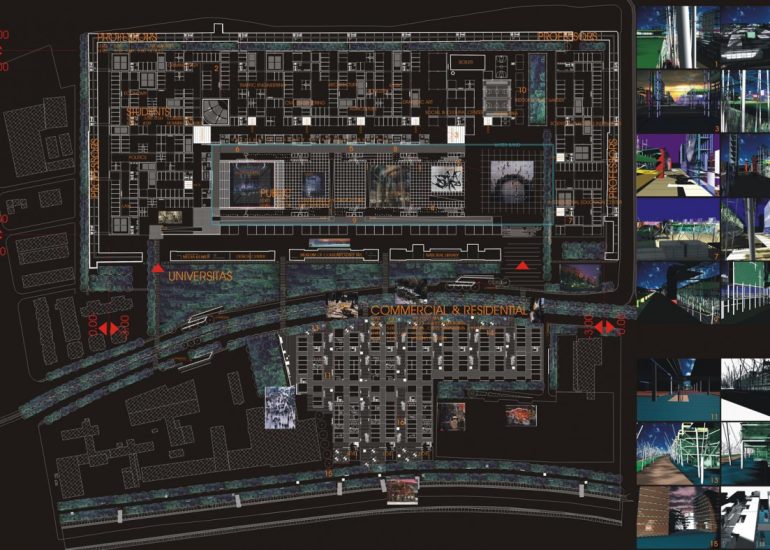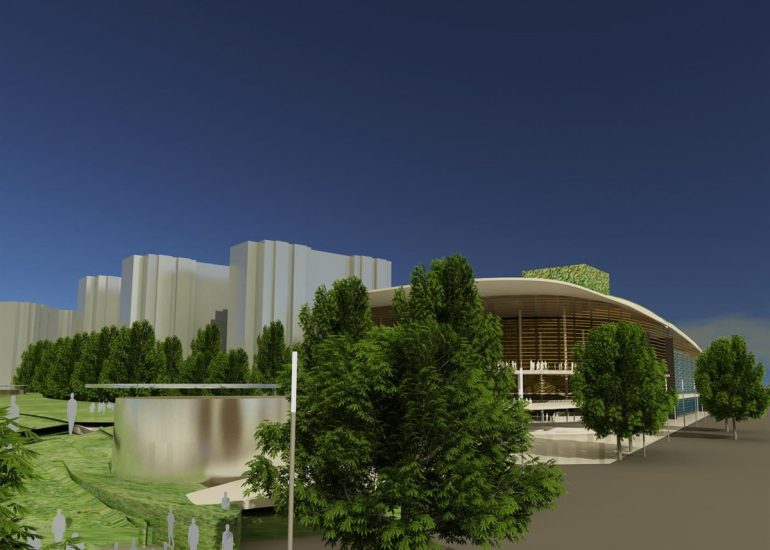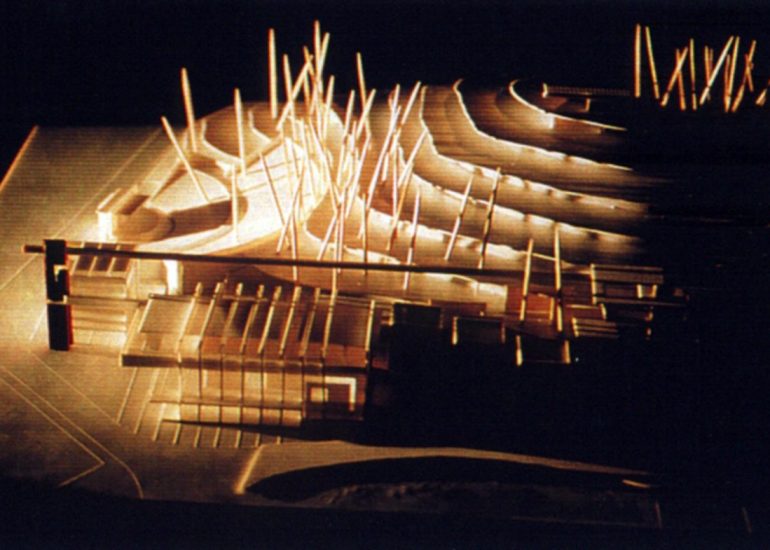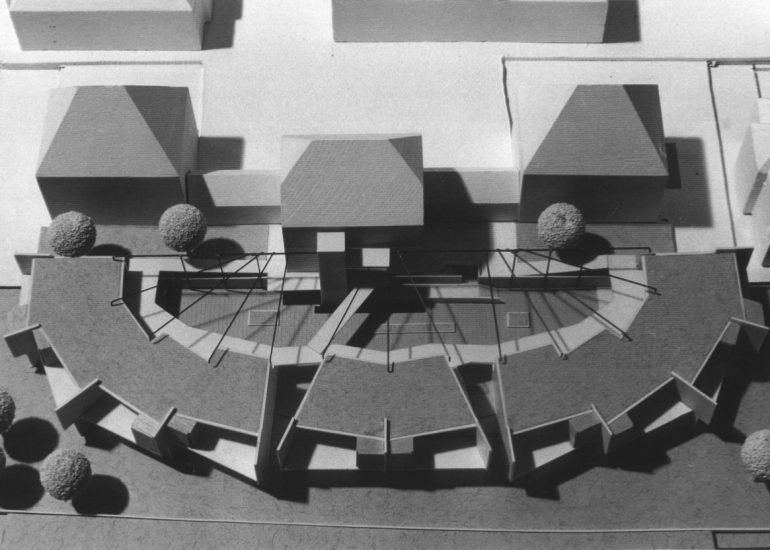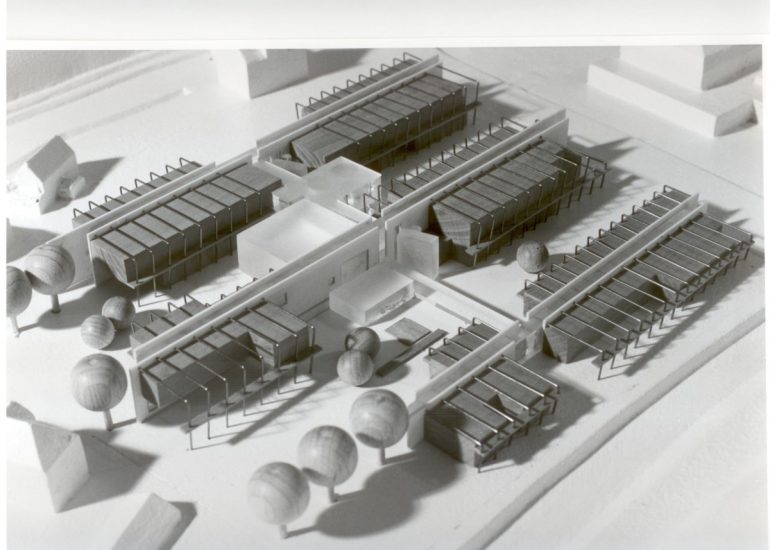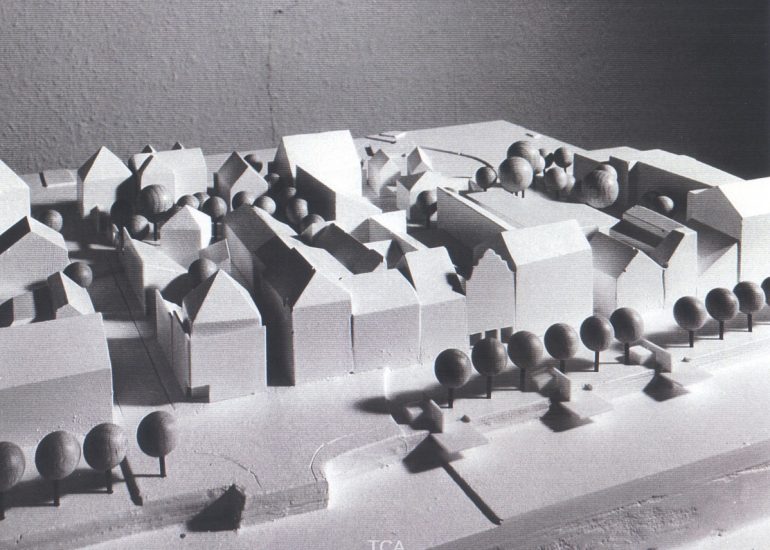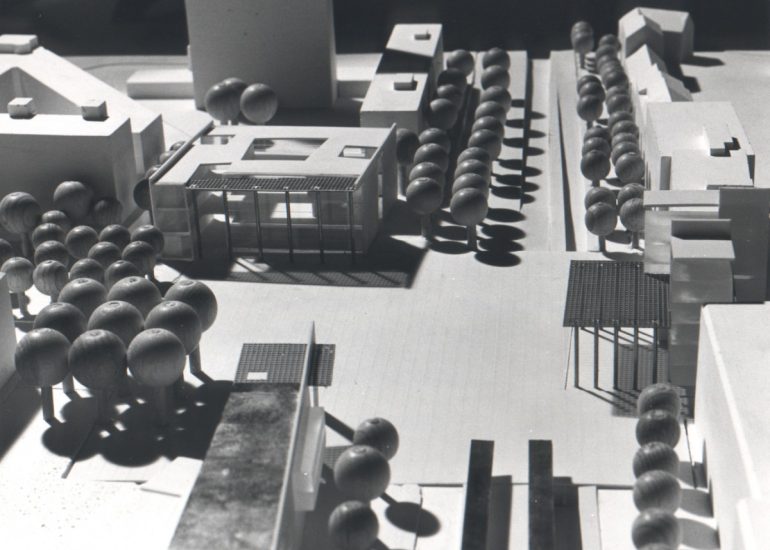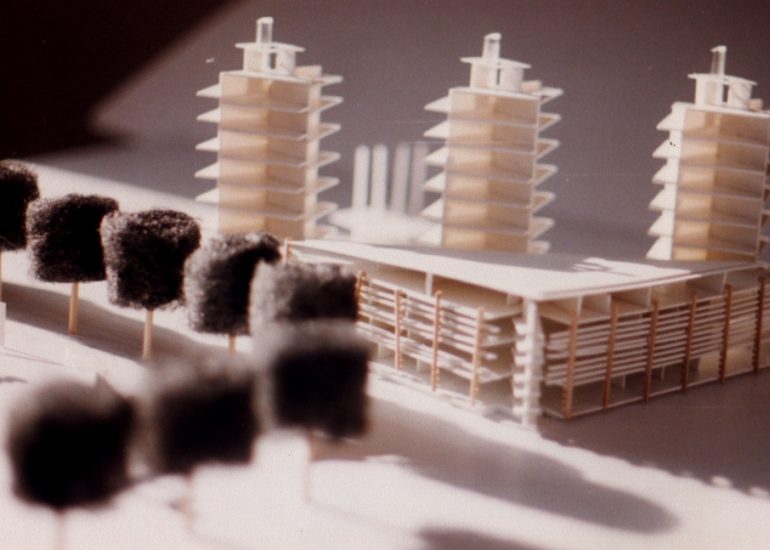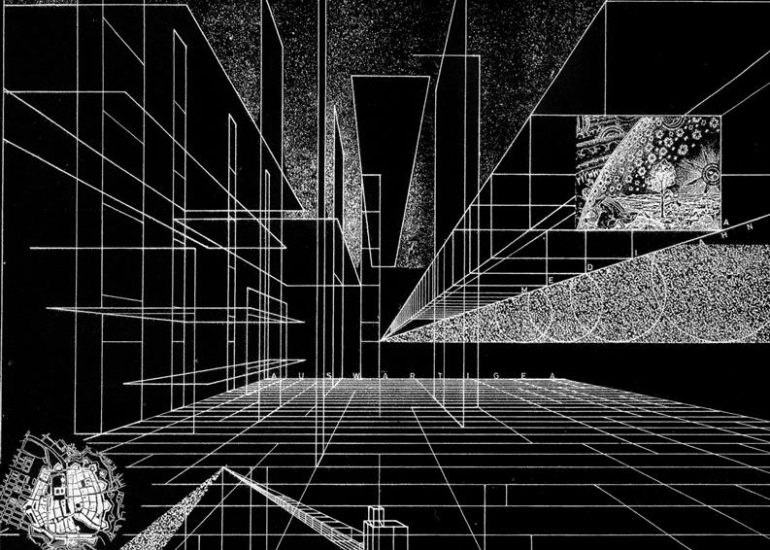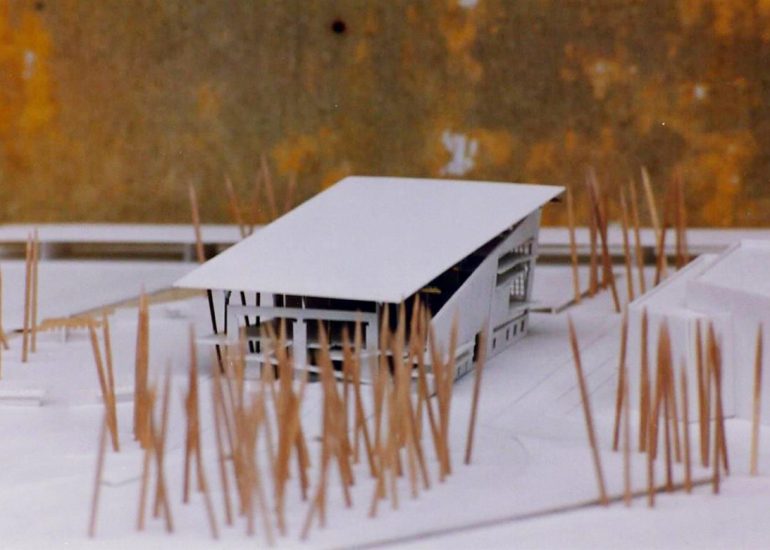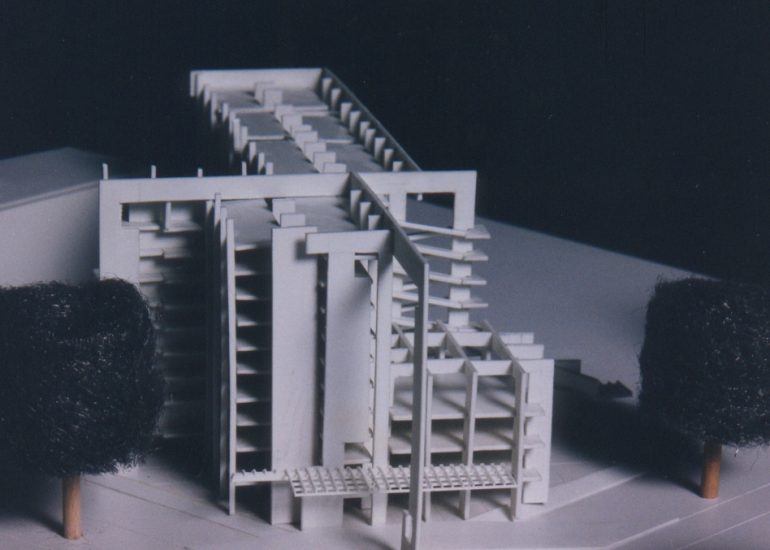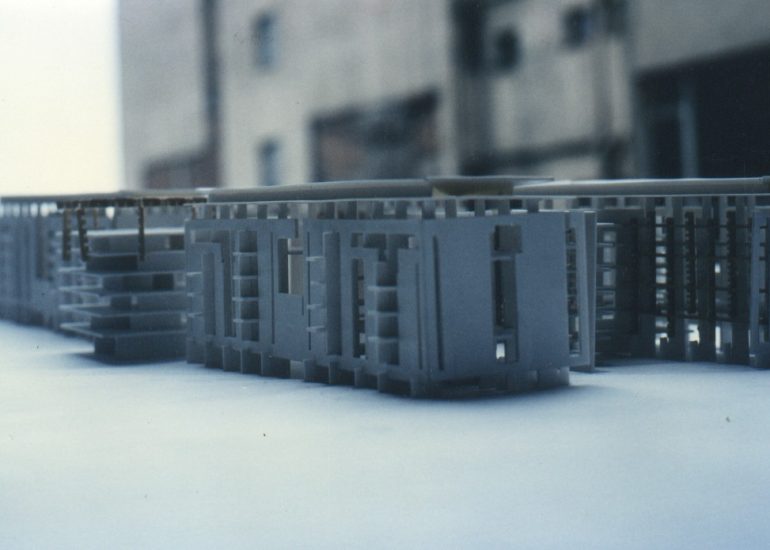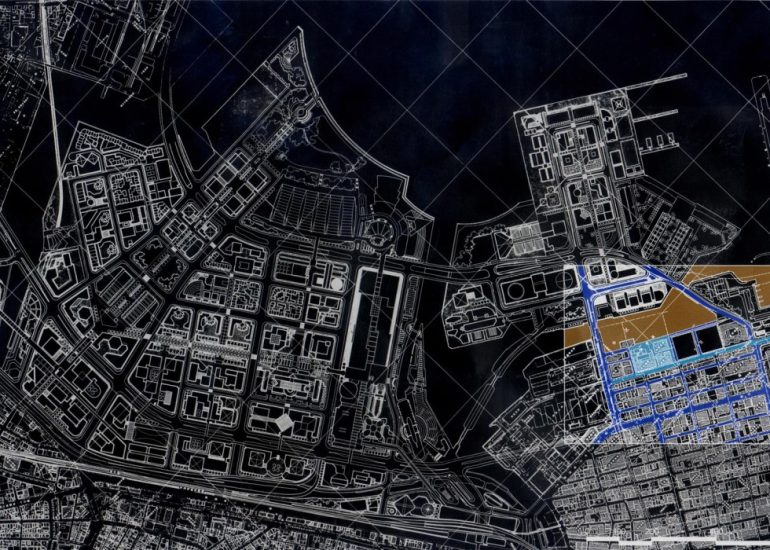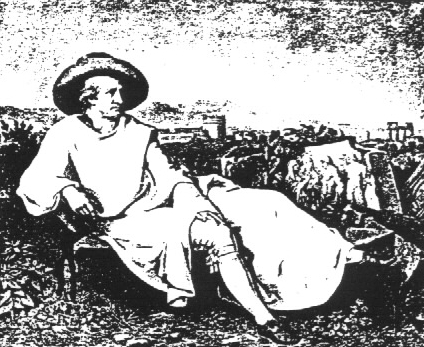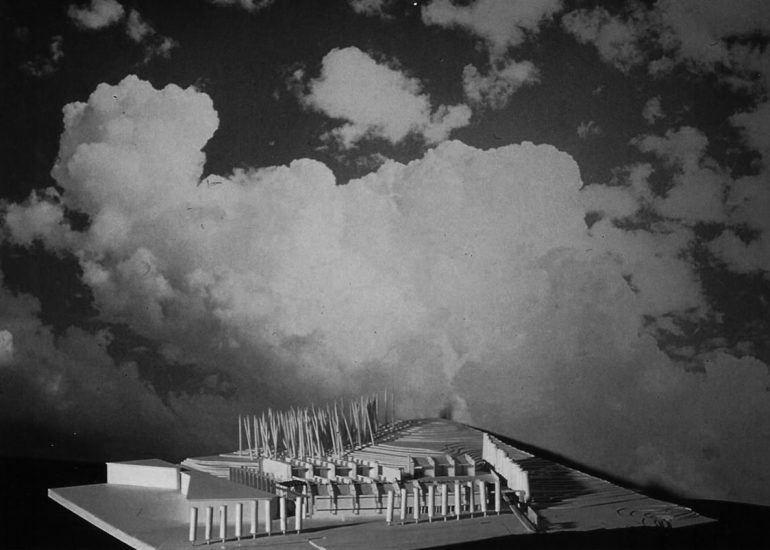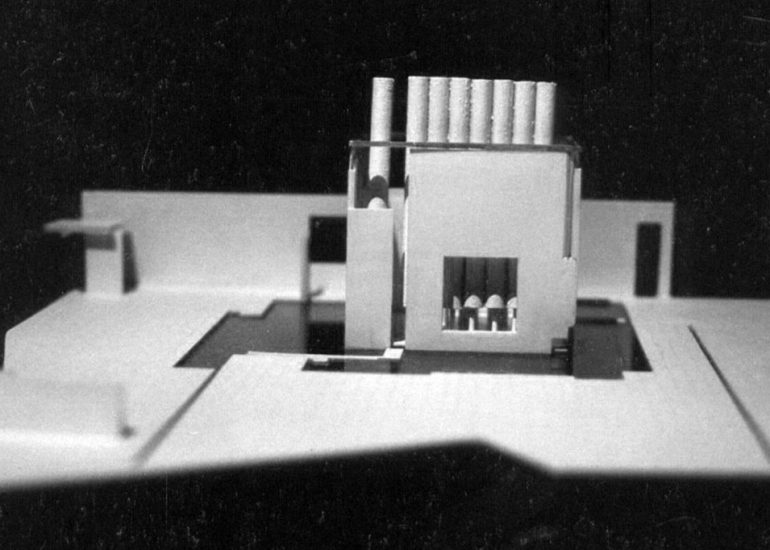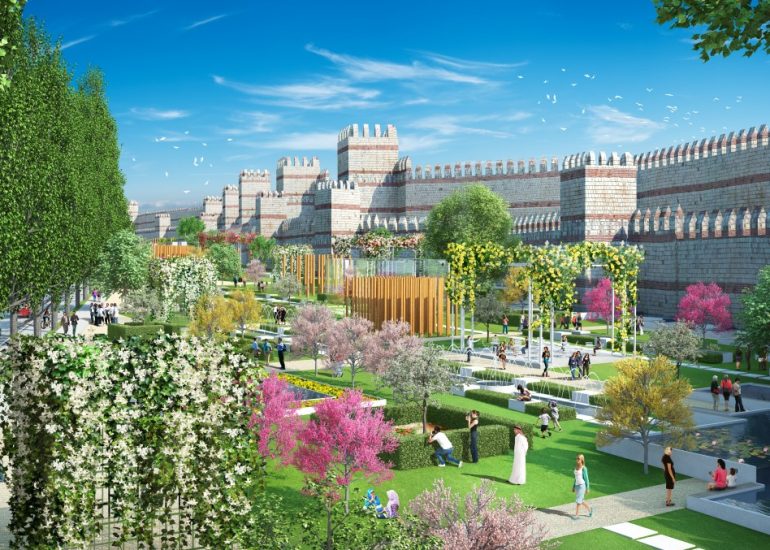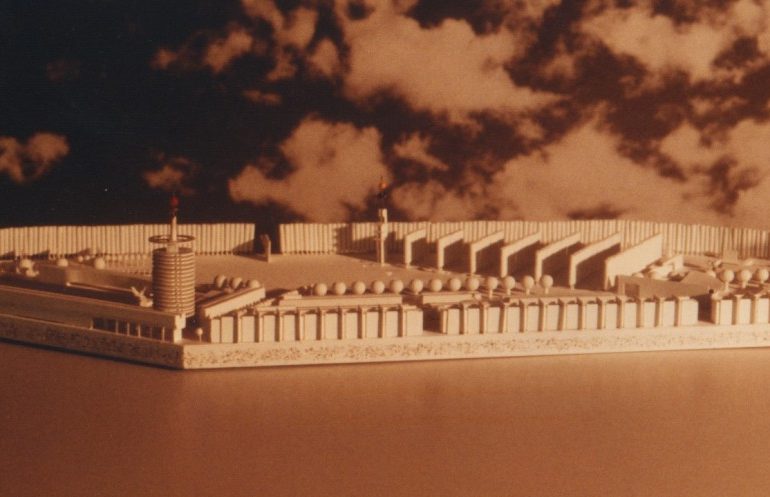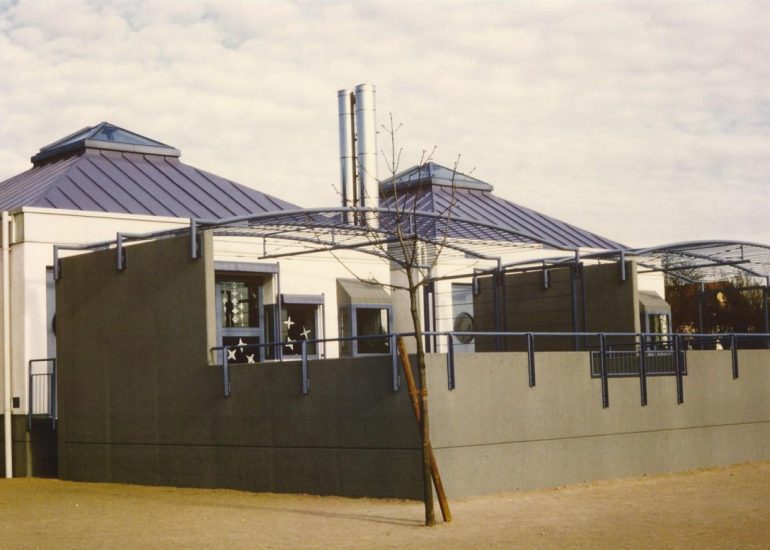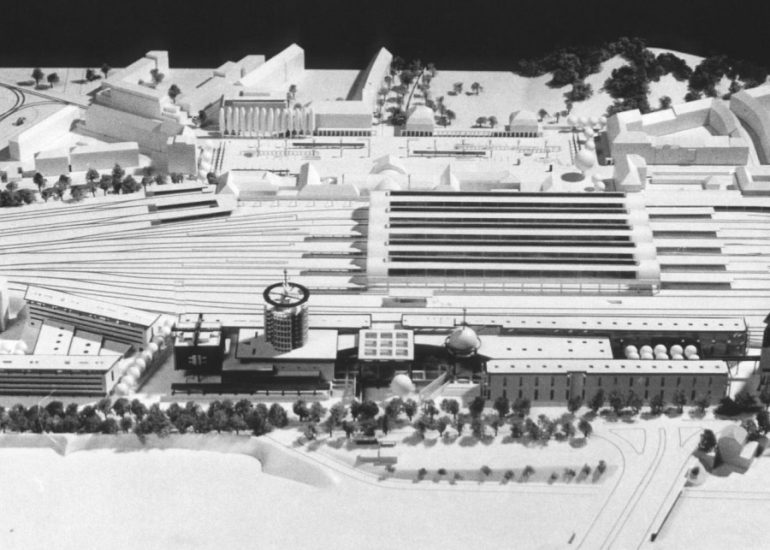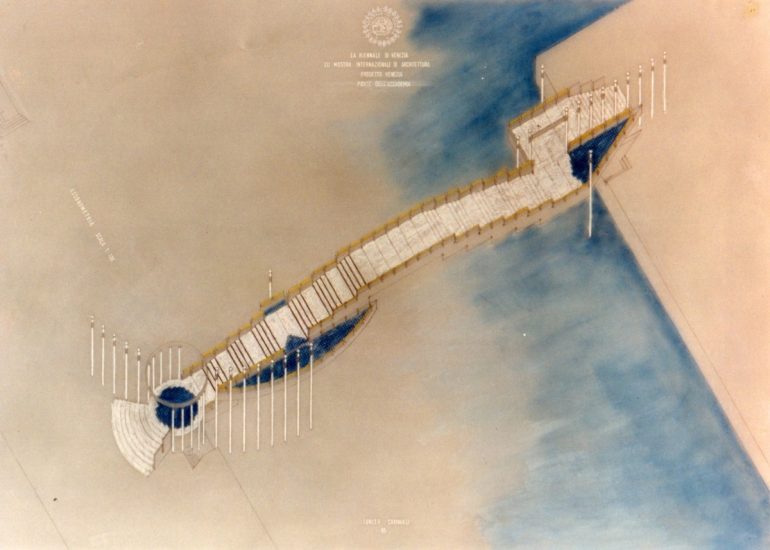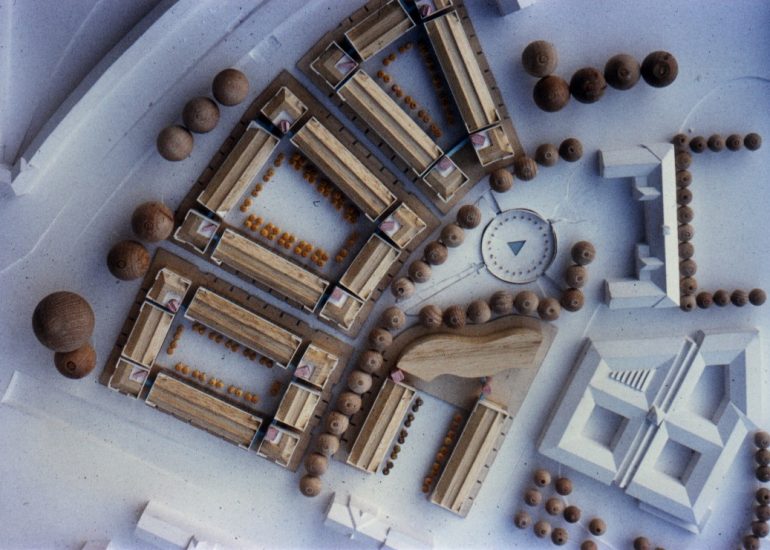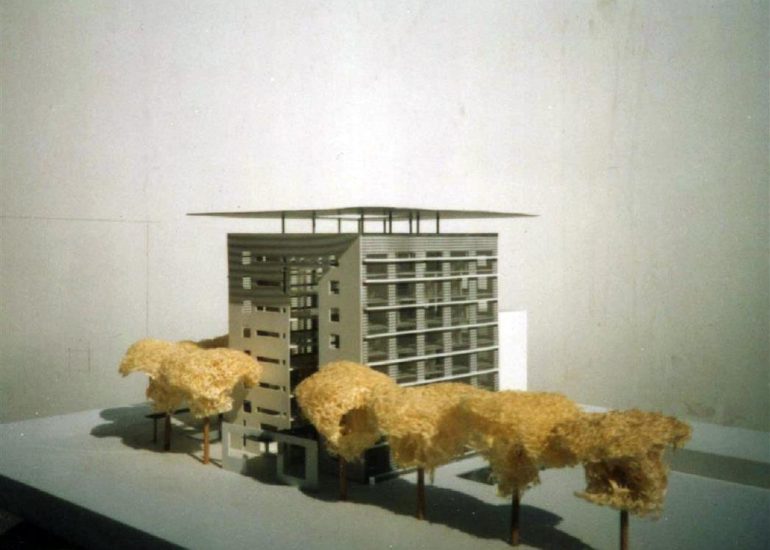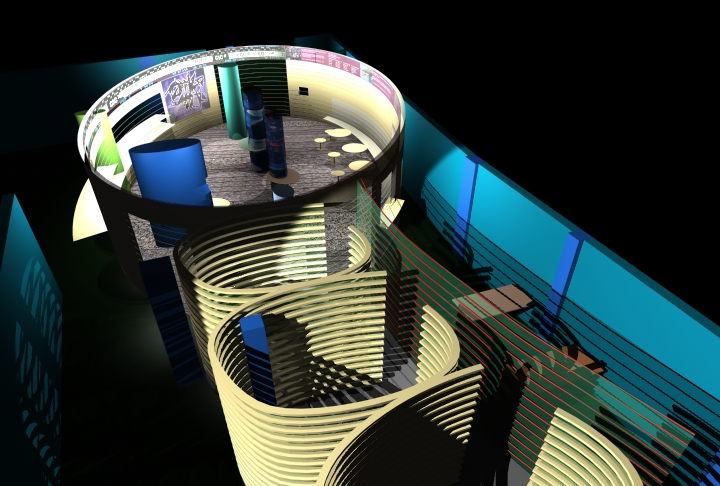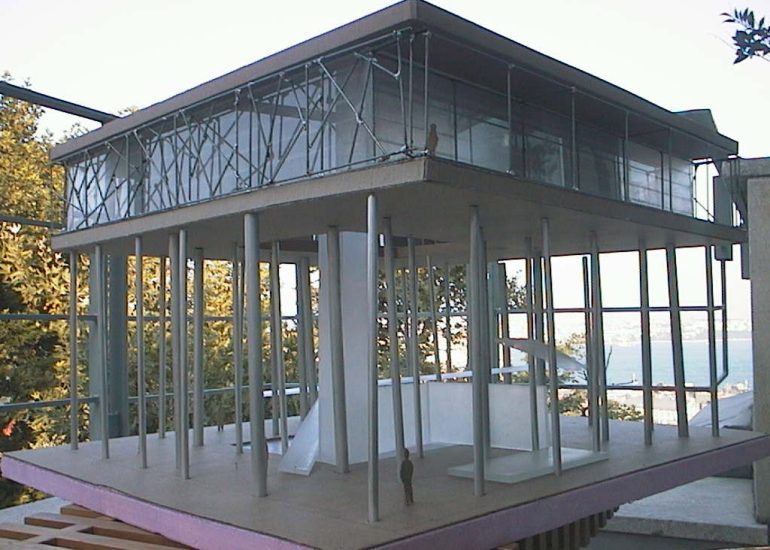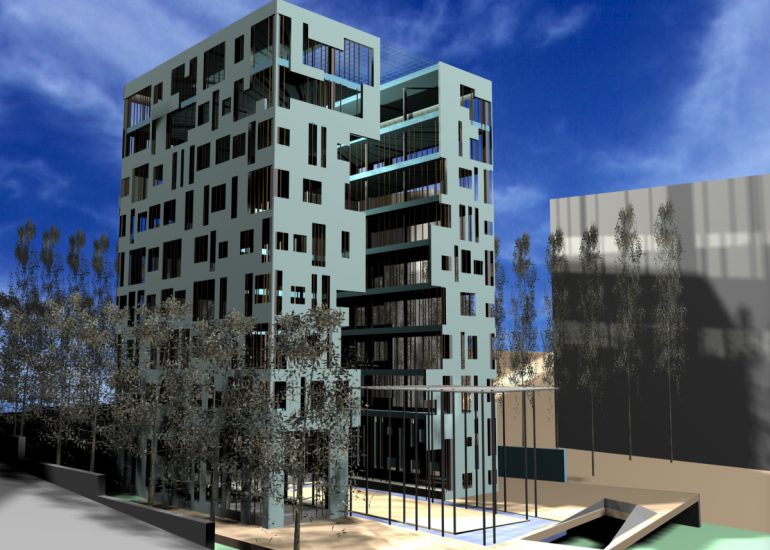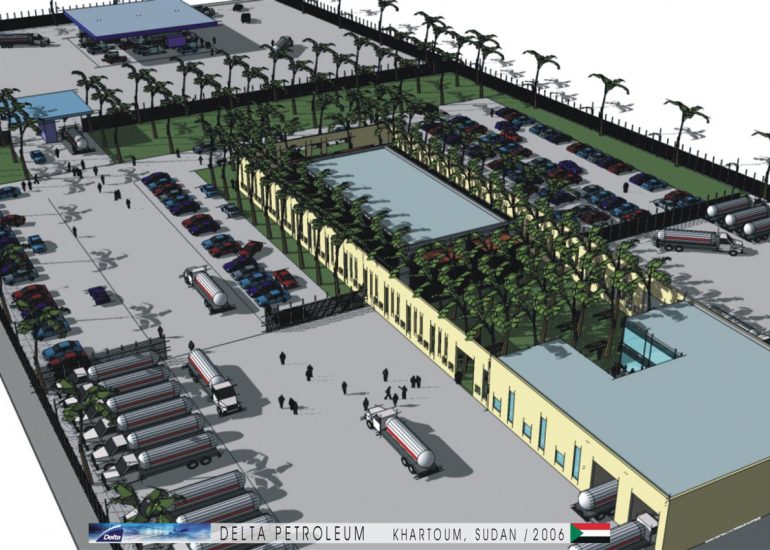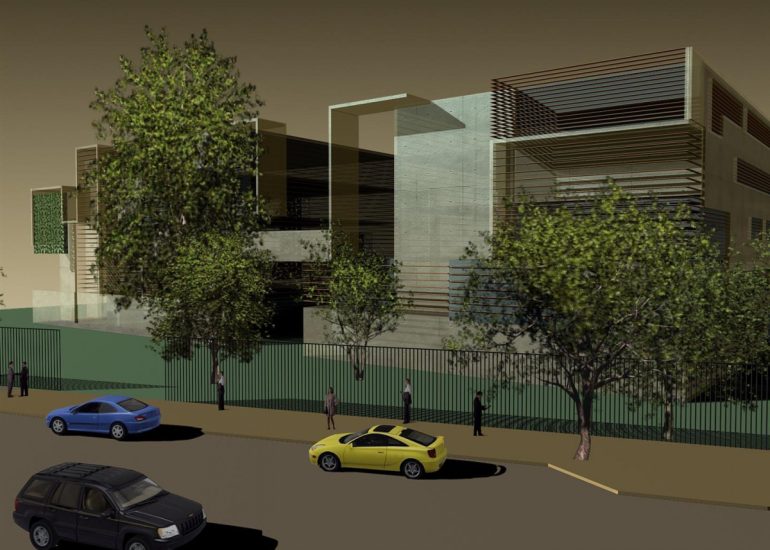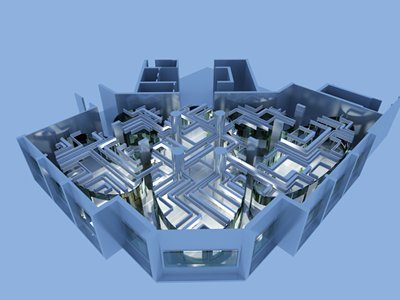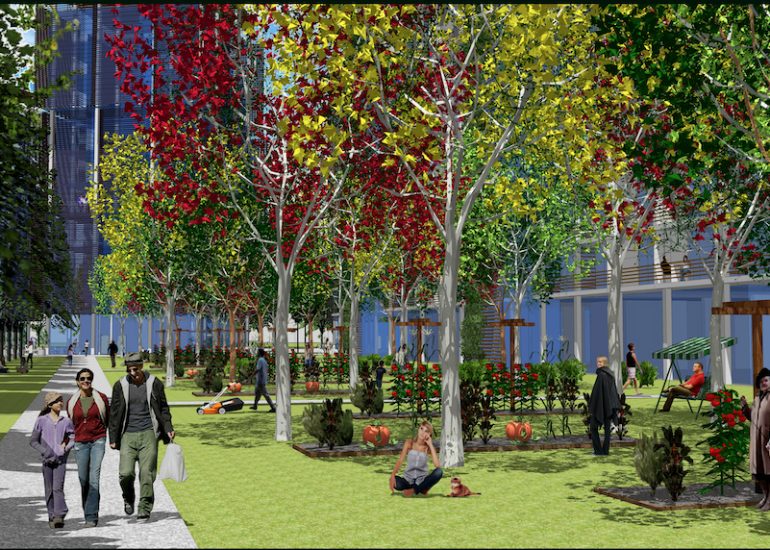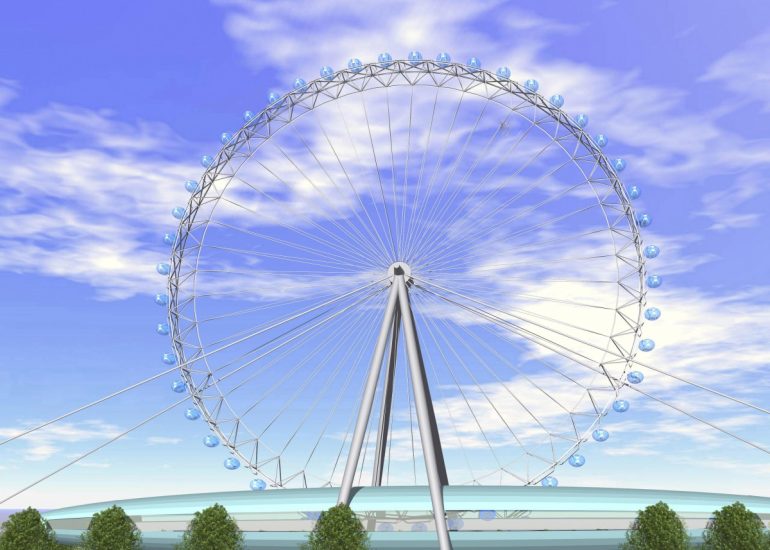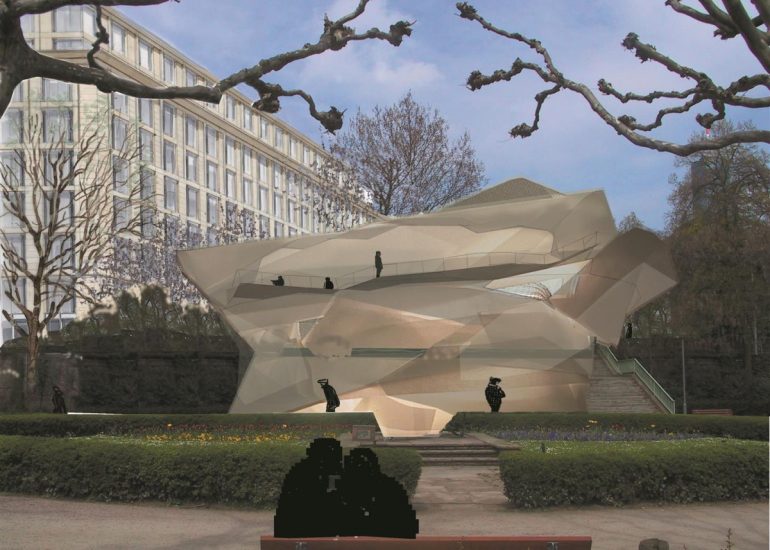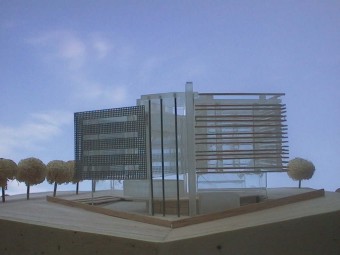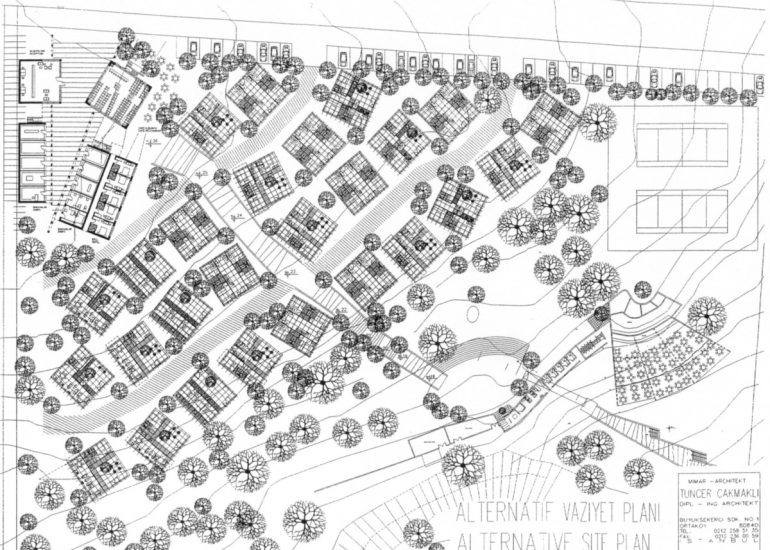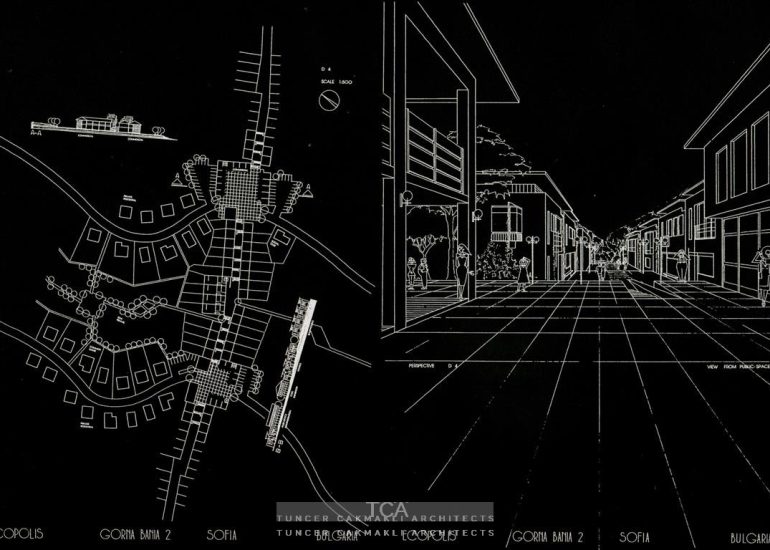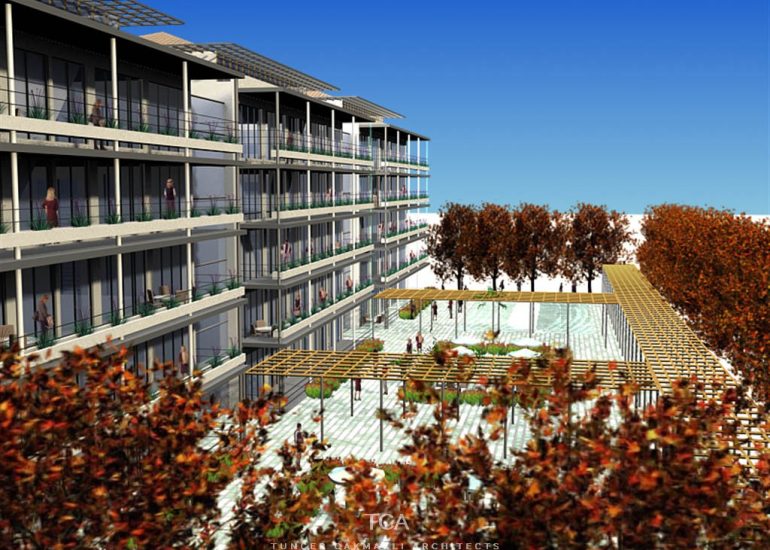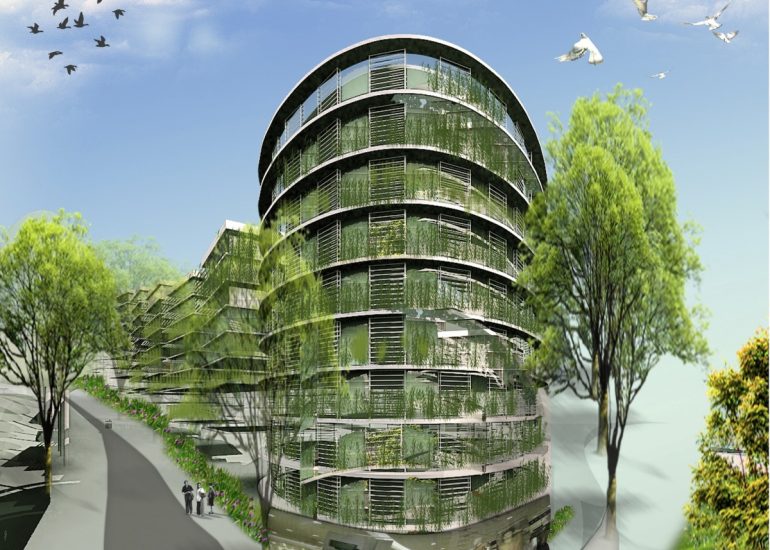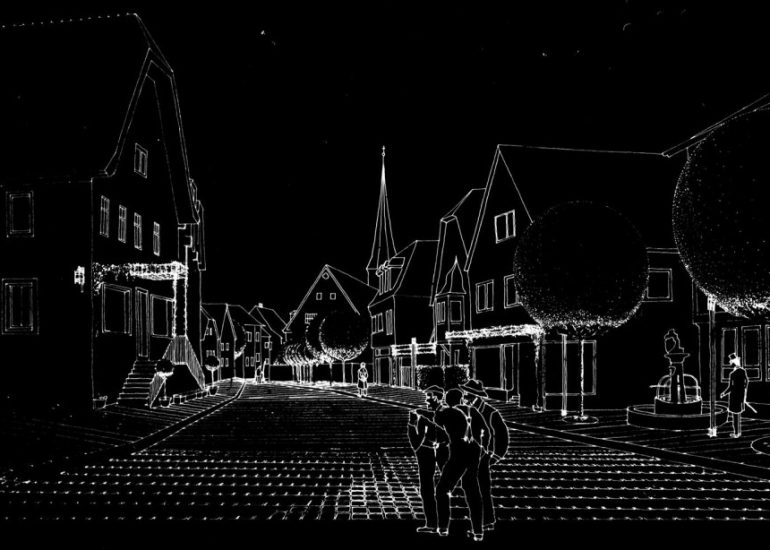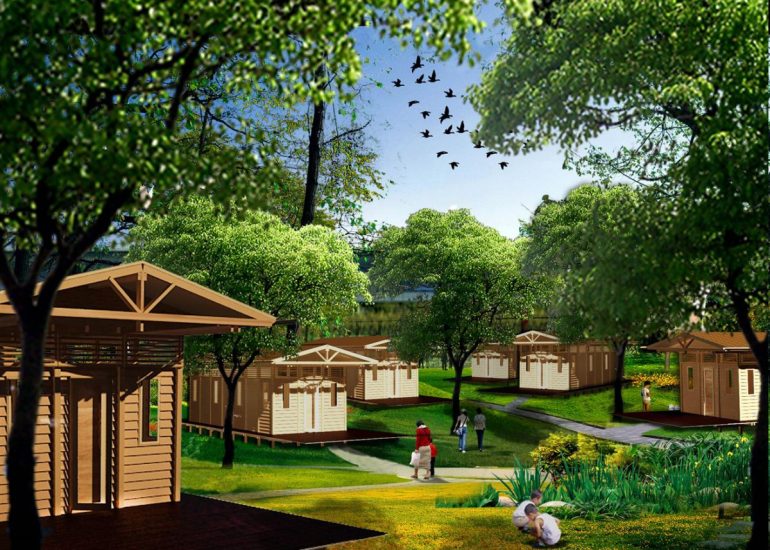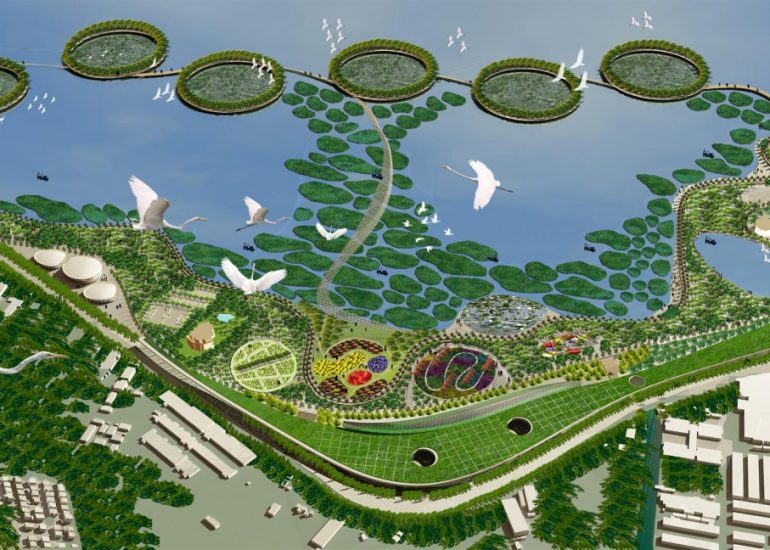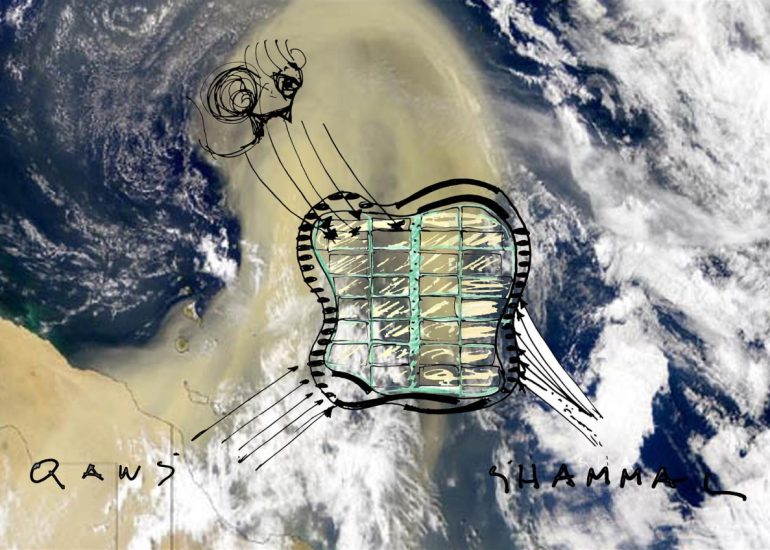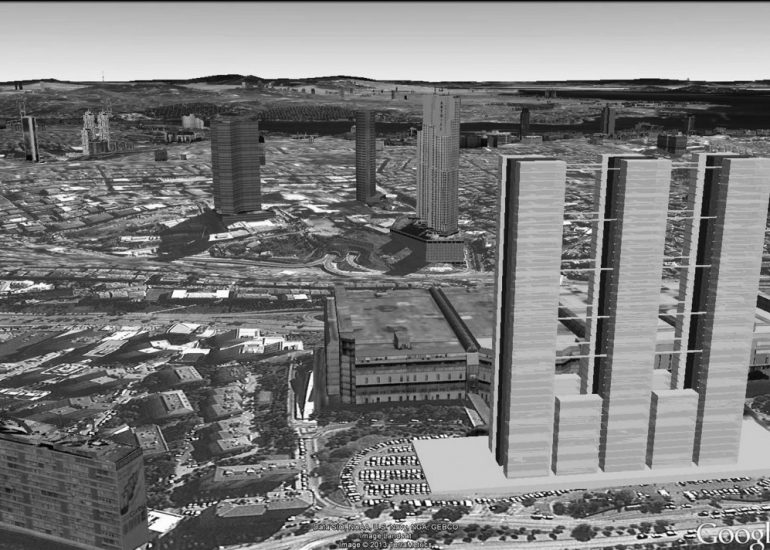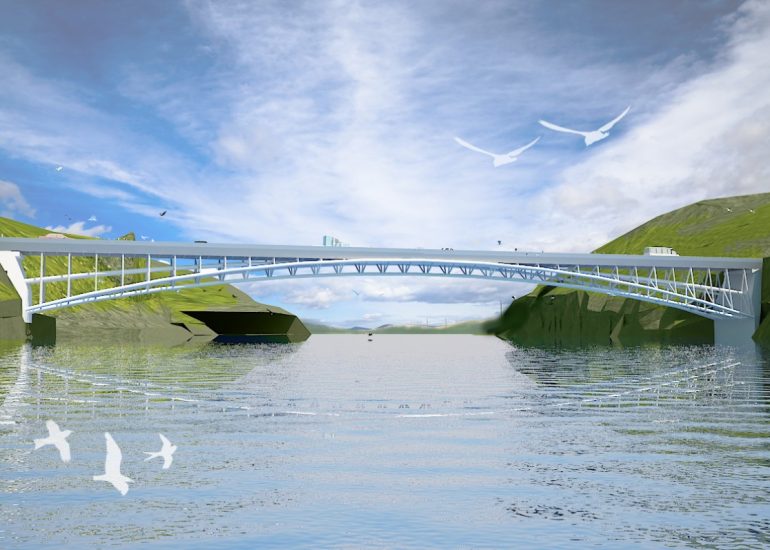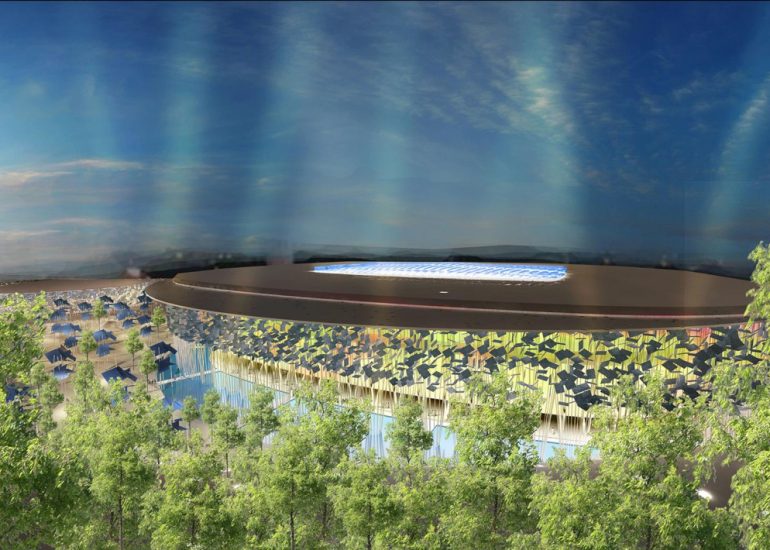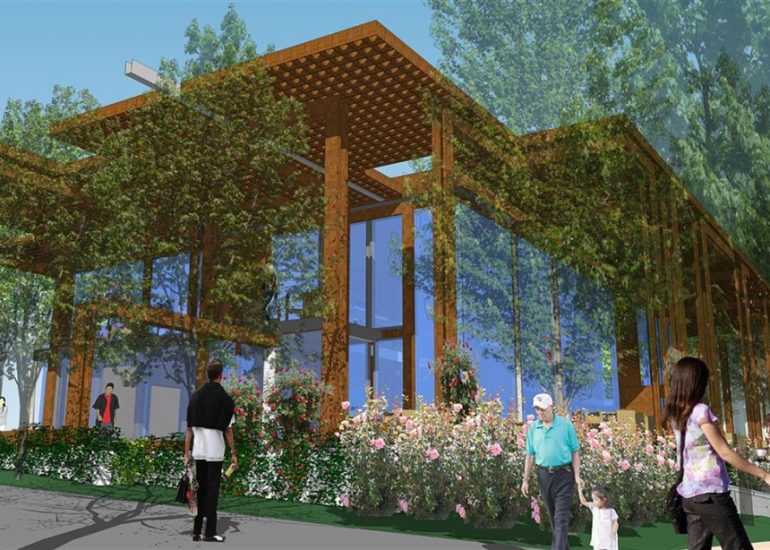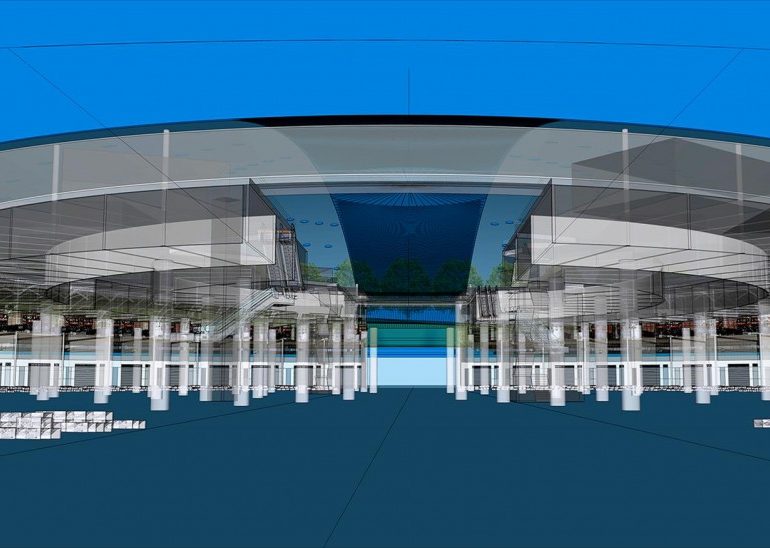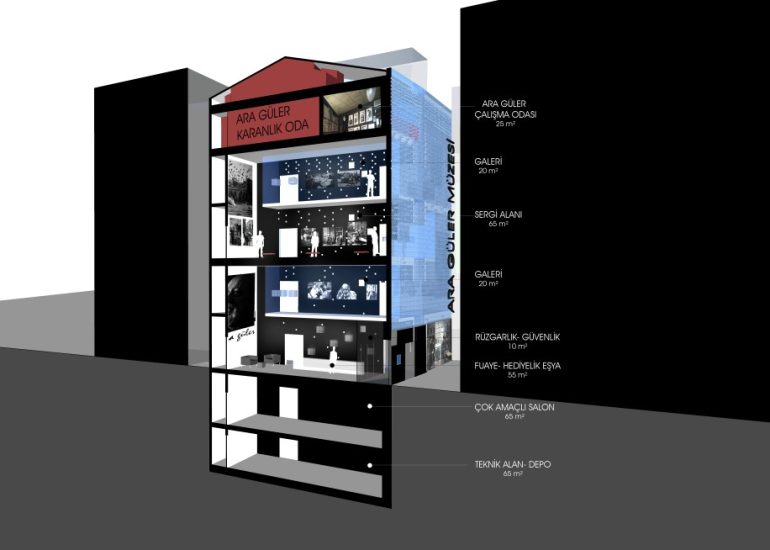Consulate General of Switzerland
ISTANBUL
800 m² of rental space in an Istanbul high-rise was transformed into a spacious working environment that evokes the materials, workmanship, and landscapes of Switzerland.
The government of Switzerland aquired an 800 square meter area in an Istanbul high-rise, for which the architects were commissioned to do the design, contracting, and finish work. The brief was to plan for the offices, meeting rooms, and public counters of various consular departments, as well as to accomodate public visitors to the visa office, which number more than 200.000 per year.
Step into the Swiss Consulate Generale in Istanbul, where design transcends mere aesthetics to become a captivating narrative of Switzerland’s landscape and the intricate artistry of wood craftsmanship. Every detail within these walls has been thoughtfully curated, weaving a tapestry that harmonizes with the breathtaking scenery of Switzerland.
As you enter, the doors stand as the first testament to this meticulous design. Crafted with precision, they reflect the sturdy elegance of Swiss architecture, perhaps reminiscent of the robust mountainous landscapes that define the Swiss countryside. Each door, a portal to diplomatic engagements, echoes the resilience and strength found in Switzerland’s natural terrain.







Look upward, and the ceiling becomes a canvas portraying the vastness of the Swiss sky. Inspired by the celestial beauty that graces the Alpine region, the ceiling design invites you to gaze upward and feel a connection to the open skies above the Swiss landscapes. Its subtle intricacies mirror the play of clouds over snow-capped peaks, creating an ethereal ambiance.
The walls are adorned with a symphony of textures and hues, mirroring Switzerland’s diverse landscapes. From the serene blues reflecting its pristine lakes to the warm earthy tones reminiscent of the rolling hills, every color palette tells a story. Swiss precision meets artistic expression in the choice of materials, creating an atmosphere that mirrors the varied geography of the country.
Furniture, meticulously selected and arranged, is a testament to Swiss craftsmanship. Each piece carries the legacy of centuries-old woodworking traditions, showcasing not just functionality but also the artistry of handcrafted design. Every chair and table resonates with the soul of Switzerland, where precision and craftsmanship converge to create timeless pieces.
The lighting design casts a warm glow, reminiscent of the golden hues that dance upon the Swiss landscapes during sunset. Whether it’s the pendant lights inspired by traditional Swiss lanterns or the strategically placed fixtures echoing the soft glow of alpenglow, the lighting scheme is a choreography that transforms the consulate into a welcoming haven.
In this interior design masterpiece, the Swiss Consulate Generale in Istanbul becomes a living tribute to Switzerland’s natural beauty and the unparalleled skill of its artisans. It’s not just a diplomatic space; it’s a poetic expression where every element, from the doors to the furniture, weaves a narrative inspired by the landscapes and wood craftsmanship of Switzerland. Welcome to a consulate that transcends borders, embracing the spirit of two nations in every meticulously crafted detail.
Budget: 750.000 €
Location: Istanbul,Turkey
In architecture, as in language, a ceiling is never merely a ceiling. It is a text, a palimpsest of cultural memory, a quiet gesture toward the sky. Within the quiet dignity of the Swiss Consulate’s guest and visitor space—an enclave of diplomacy, discretion, and quiet power—the ceiling performs not only the structural function of shelter, but the semantic duty of representation. It is not merely what contains the space; it is what speaks it.
Here, the ceiling becomes an architectural utterance. It is the uppermost syntax of a space tasked with the symbolic representation of a nation-state renowned for neutrality, precision, and alpine clarity. Thus, its design cannot be arbitrary. It must speak the language of Switzerland without descending into cliché. There must be no cartoon Alps, no saccharine invocations of folklore. Rather, the ceiling must, like a Swiss timepiece, articulate complexity with restraint.
Constructed with rigor and a conscious material vocabulary, the ceiling does not impose; it reveals. Layers of texture—wood, perhaps, native to the valleys of Graubünden, or a fine brushed metal invoking the cool efficiency of Basel’s engineering tradition—interplay with light. Not decorative light, but narrative light. Light that filters softly, as if through mountain mist, suggesting both presence and withdrawal. Each beam, each panel, is calibrated—not to impress, but to resonate.
Texture, in this ceiling, becomes text. The materials are not merely chosen for their durability or cost-efficiency; they are chosen for their signifiance—the way they signify. A lightly striated surface might evoke the sedimentary memory of stone, echoing the geological stability of the Confederation itself. A rhythmic linearity in the paneling becomes a visual metaphor for federal order, unity without uniformity. Even silence—yes, the acoustic softness of the space—becomes a communicative gesture, one of respect, of attentiveness, of listening: qualities essential to diplomacy and to the Swiss temperament alike.
This ceiling, then, is not a passive surface. It is a semiotic field—an architecture that thinks. Like a well-written sentence, it balances grammar with grace. It reminds the guest, subtly and without proclamation, that they are within a space where thought has been given to every element. Where meaning is layered, not imposed.
To design a ceiling for a consulate is to design above politics, but not beyond it. It is to articulate values without slogans, to create identity without iconography. In this space, Switzerland is not illustrated—it is inferred. And in that inference, the ceiling becomes more than architecture. It becomes a cultural epistemology made visible.
—————————————————————————————————————————————————————
Mimarlıkta, tıpkı dilde olduğu gibi, bir tavan asla yalnızca tavan değildir. O, kültürel belleğin bir palimpsesti, sessiz bir gökyüzüne gönderilen jest, bir metindir. İsviçre Konsolosluğu’nun misafir ve ziyaretçi alanındaki sükunet dolu asaletinde—diplomasinin, ihtiyatın ve sessiz gücün bir sığınağı—tavan, yalnızca mekânsal korumayı sağlamaz, aynı zamanda temsilin anlamsal görevini de üstlenir. O, mekanı sadece içine almaz; konuşur.
İşte tavan, mimari bir ifadedir. İsviçre’nin tarafsızlığı, hassasiyeti ve dağların berraklığıyla ün kazanmış bir devletin sembolik temsilini gerçekleştirmekle görevli alanın en üst sözdizimi olarak ortaya çıkar. Bu yüzden tasarımı rastlantısal olamaz. İsviçre dilini klişelerden uzak bir şekilde konuşmalıdır. Ne karikatürize Alp dağları ne de aşırı tatlı folklor imaları yer alabilir. Bunun yerine tavan, tıpkı İsviçre saatçiliği gibi, ihtiyatla ve karmaşıklığı kibarca dile getirmelidir.
Sıkı bir bilinç ve maddi bir kelime dağarcığı ile inşa edilen tavan, dayatmaz; ortaya çıkarır. Doku katmanları—örneğin Graubünden vadilerinin yerlilerine ait ahşap ya da Basel’in mühendislik geleneğinin serin verimliliğini andıran ince fırçalanmış metal—ışıkla birlikte bir araya gelir. Dekoratif bir ışık değil; anlatısal bir ışıktır. Hafifçe süzülen ışık, dağ sisi arasında süzülen ışık gibi hem varlığı hem de geri çekilişi ima eder. Her bir kiriş, her bir panel özenle ayarlanmıştır—etkilemek için değil, yankı uyandırmak için.
Bu tavanın dokusu, bir metin haline gelir. Malzemeler sadece dayanıklılıkları veya maliyet etkinlikleri için seçilmemiştir; onlar anlam ifade edicilikleri dolayısıyla seçilmiştir—imlettikleri şekilde. Hafifçe çizgili bir yüzey, İsviçre Konfederasyonu’nun jeolojik istikrarını yankılayan kayaçların sedimanter hafızasını anımsatabilir. Paneldeki ritmik çizgisel düzen, federal düzenin, birliği ancak tekdüzelikten uzak olmanın görsel bir metaforu haline gelir. Hatta sessizlik—evet, alanın akustik yumuşaklığı—iletilmek istenen nezaket, dikkatlilik, dinleme gibi diplomasi ve İsviçre ruhunun temel niteliklerine göndermede bulunur.
İşte, bu maddeler ve anlam—yapı ve işaretin bir araya gelmesi—tavanın Eco’nun dediği açık eser haline gelmesini sağlar. Ziyaretçiler, kendi kültürel kodlarına göre tavanı farklı okurlar: Alman bir delege modernizmin mirasını görür; Ticino’dan bir sanatçı yerel zanaatın yankısını fark eder; Cenevre’den bir akademisyen ise tavanı, insani dokunuşun sıcaklığıyla yumuşatılmış cartesyen bir ızgara olarak yorumlar.
Böylece tavan yalnızca pasif bir yüzey olmaktan çıkar. O, bir semiyotik alan, düşünen mimaridir. İyi yazılmış bir cümle gibi, dil bilgisi ile zarafeti dengeler. Sessiz sedasız bir şekilde konuğu, her unsuruna özen gösterilmiş bir mekânda bulunduklarını hatırlatır. Anlam katmanları, dayatılmadan, her şeyin incelikle düşünülüp yerleştirildiğini fısıldar.
Bir konsolosluk için tavan tasarlamak, siyasetin ötesinde ama onun dışında olmayan bir alanı tasarlamaktır. Slogansız, ikonografiden uzak bir kimlik üretmektir. Bu mekânda, İsviçre betimlenmez—çıkarım yoluyla kavranır. Ve o çıkarım, tavanı sıradan mimariden çok daha fazlası haline getirir. O, görünür kılınan kültürel epistemolojidir.
#SwissConsulateIstanbul #DiplomaticDesign #SwissCraftsmanship #AlpineElegance #CulturalExchange #InteriorInspiration #SwissPrecision #DiplomacyInDesign #WoodArtistry #SwissInfluence #ConsularElegance #BridgingCultures #ArtisanalInteriors #SwissDiplomacy #InnovativeDesign #HeritageInCraft #GlobalRelations #ArchitecturalHarmony #CulturalDiplomacy #ConsularCharm #SwissLegacy #CraftedElegance #DiplomaticSpaces #CrossCulturalDesign #DesigningDiplomacy #SwissInIstanbul #InteriorsWithPurpose





